Bats are a vital part of a beautiful natural world. Gardens help Austin’s bats by enriching the biodiversity of the constructed landscape and could extend up to rooftop greenspace in the heart of downtown.
Bat rescuers who transport to Austin Bat Refuge view rehabilitating bats in an organic garden with crops, flowering shrubs and trees, and water features.
We feel the lessons learned here would translate well to any property, from green roofs in the urban core, to Hill Country Ranches.

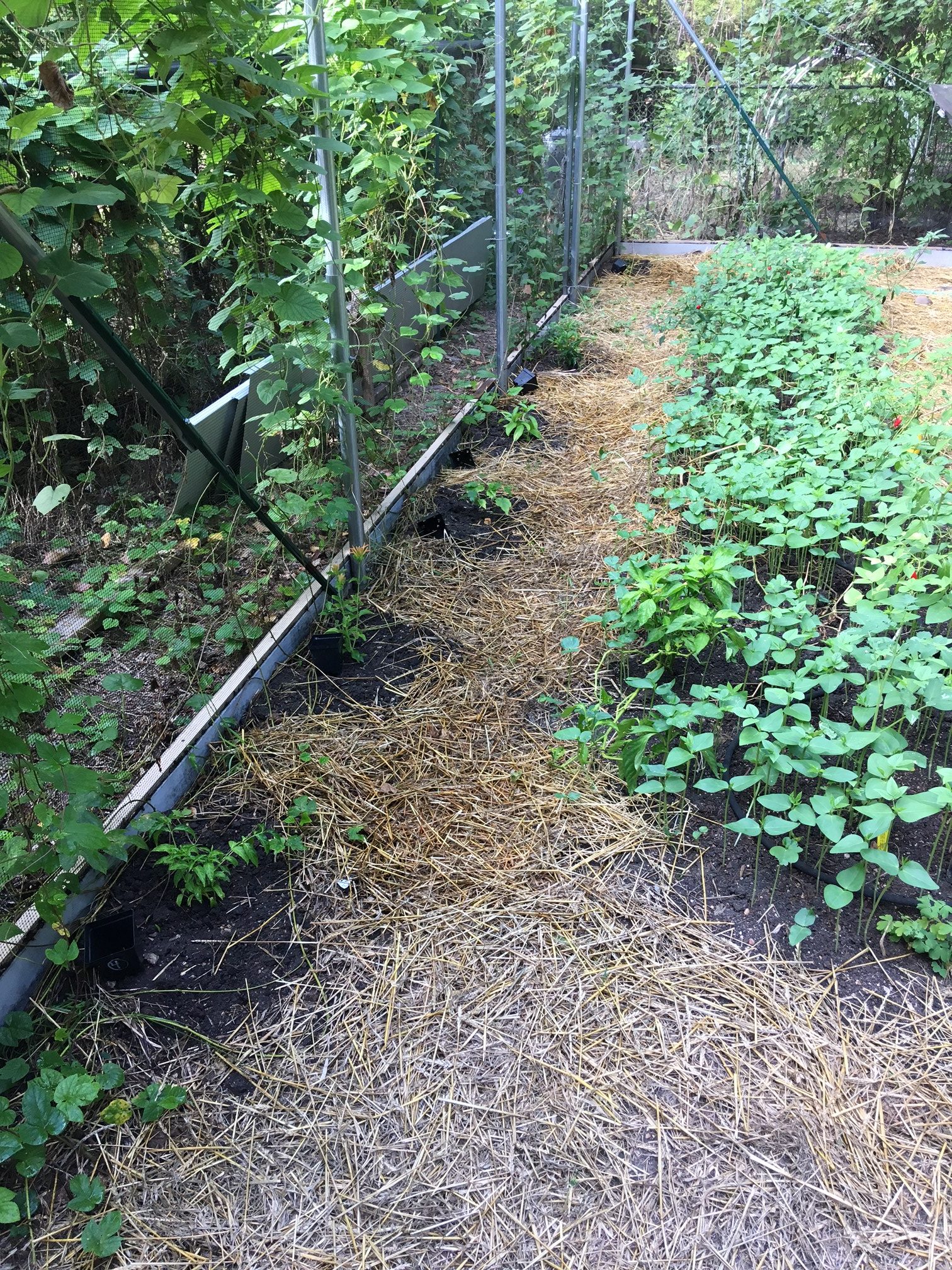
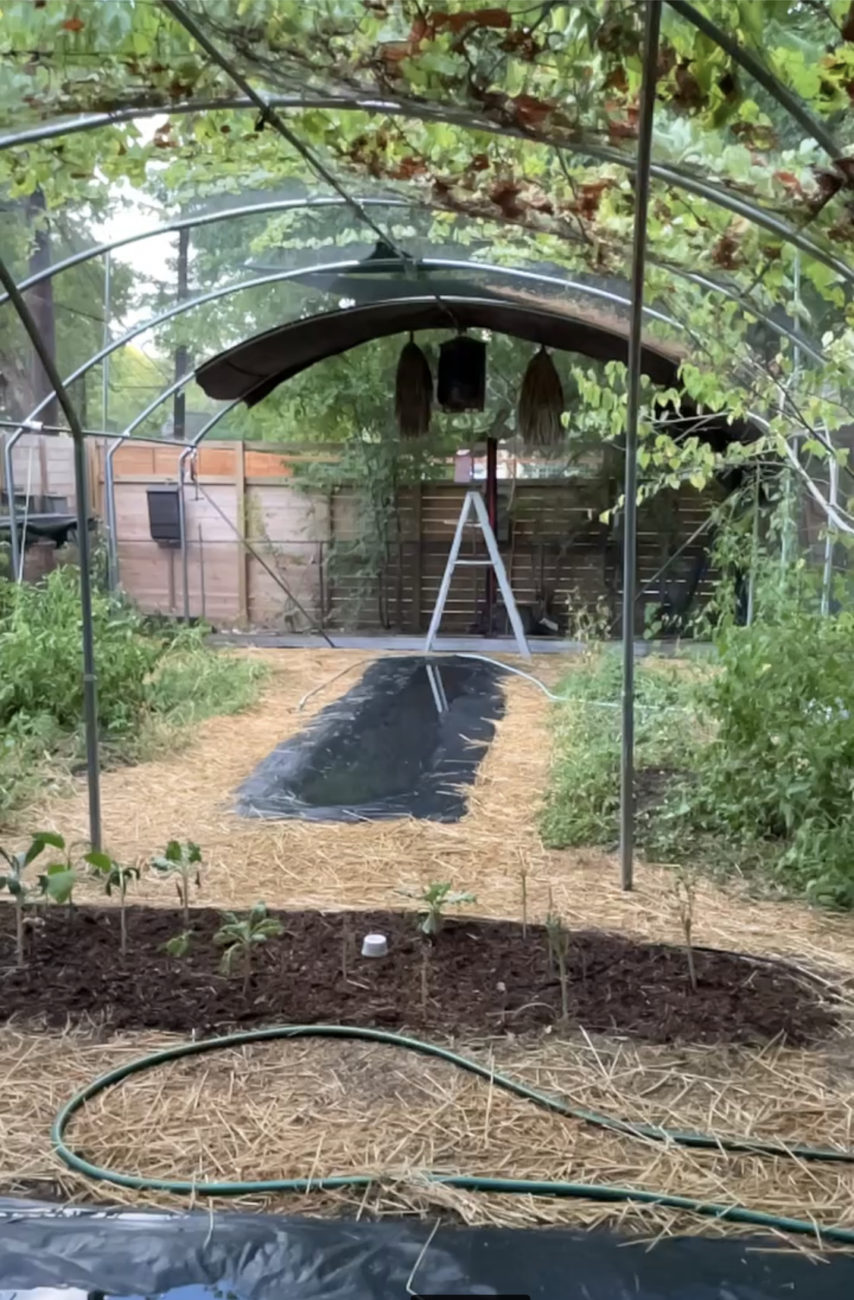
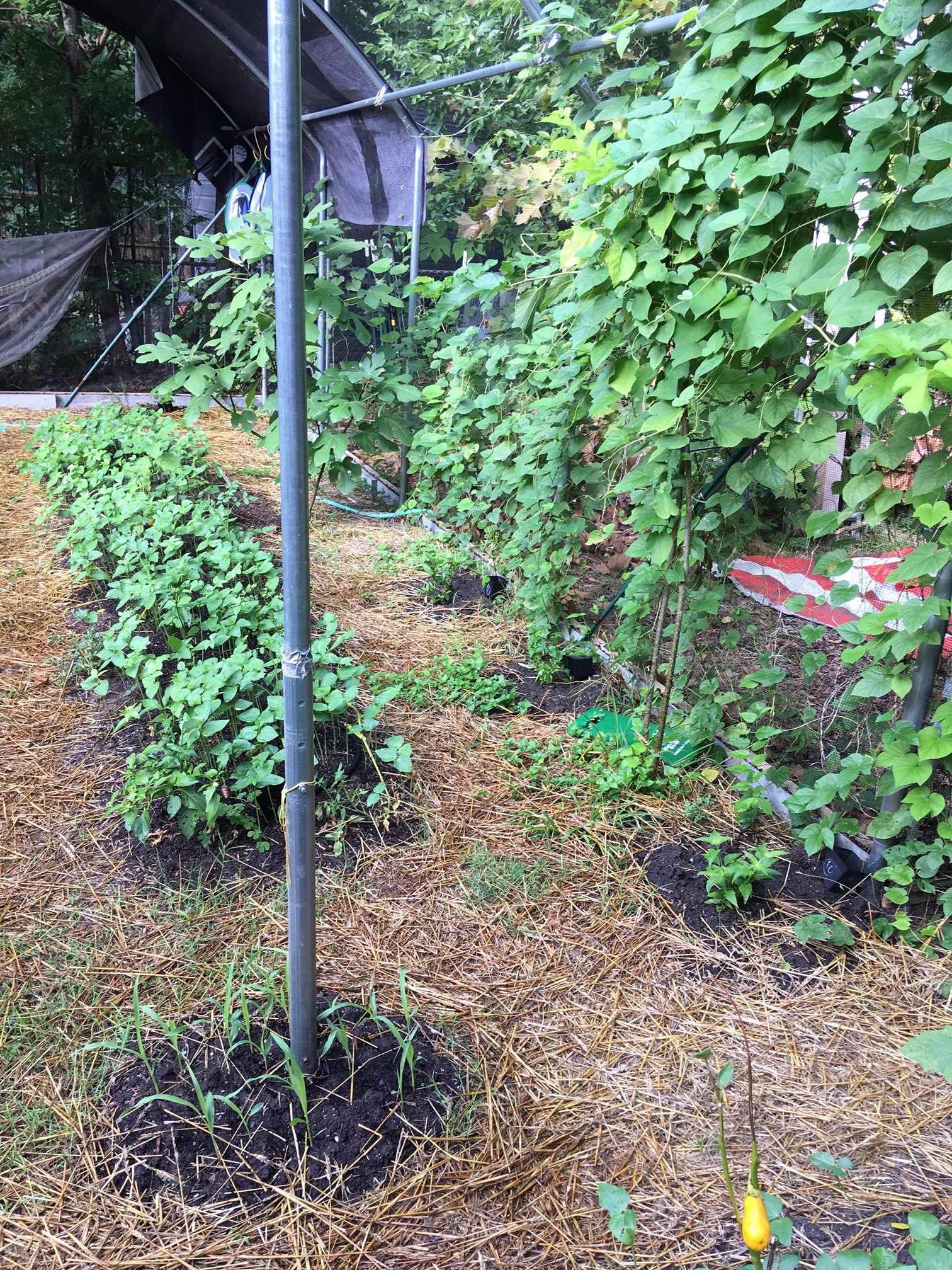
Left photo shows shrimp plants, Abutilon, Mexican honeysuckle, night-blooming jasmine, and Berlandier’s trumpets to the left of the crops and out of the way. They have since grown much larger with walls of color late in the year. Snap peas and boneset provide spring blooms, then tomatoes and peppers, before we cover up with black-eyed peas for the dog-days of summer, enriching the soil while preserving nutrients. Fall is when giant mistflower, night-blooming jasmine, and Mexican honeysuckle provide nectar for foraging moths.

When water needs changing, we dip it from the shallow troughs and pour it on the plants before refilling.
The Basics: Stay organic, Leave the Leaves, Provide Moth Host Plants & Nectar Plants with a year-round bloom cycle, Include a Water Feature with min. 7′ swoop zone, Leave Dead Trees & Leaf Clusters, Don’t Prune Precious Palms
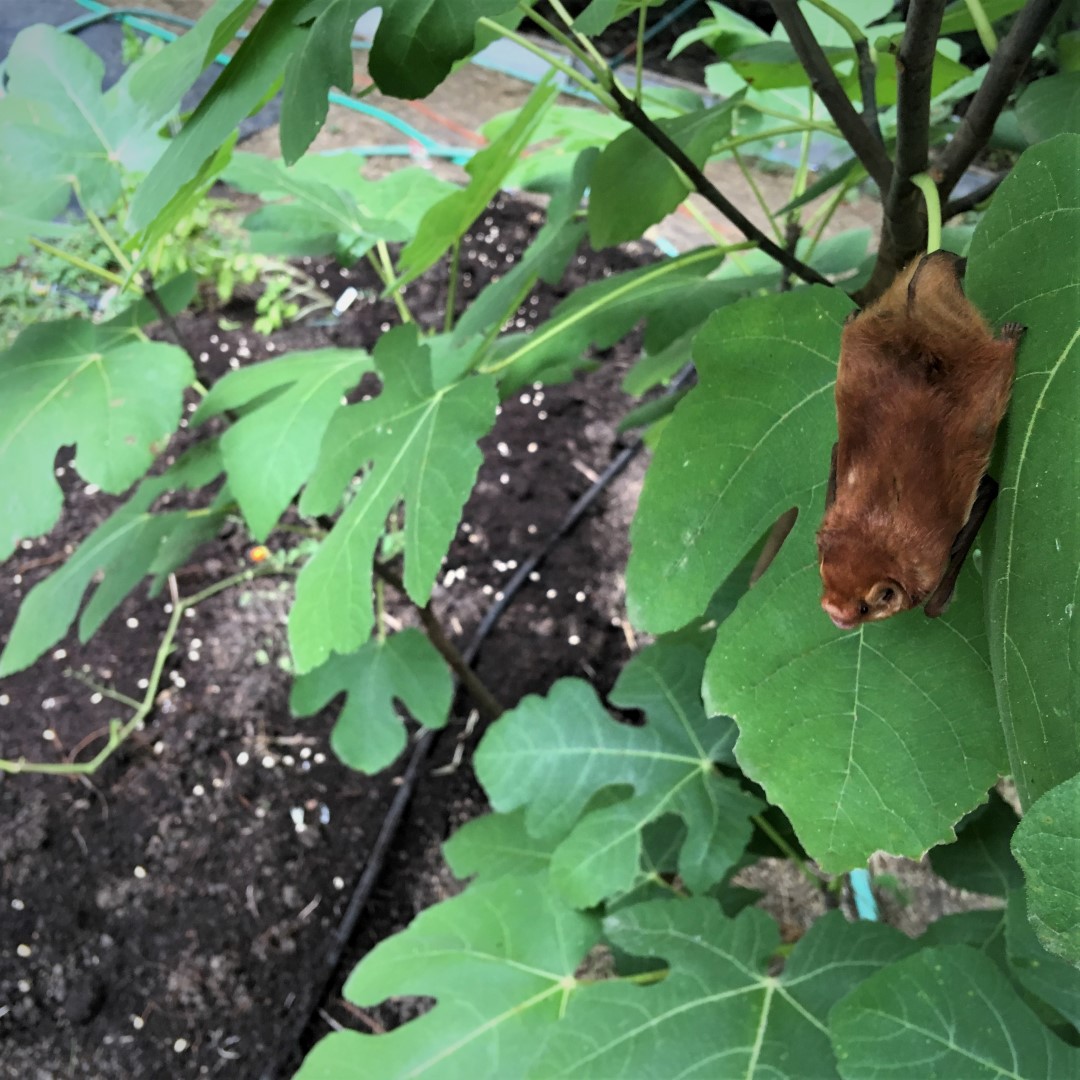
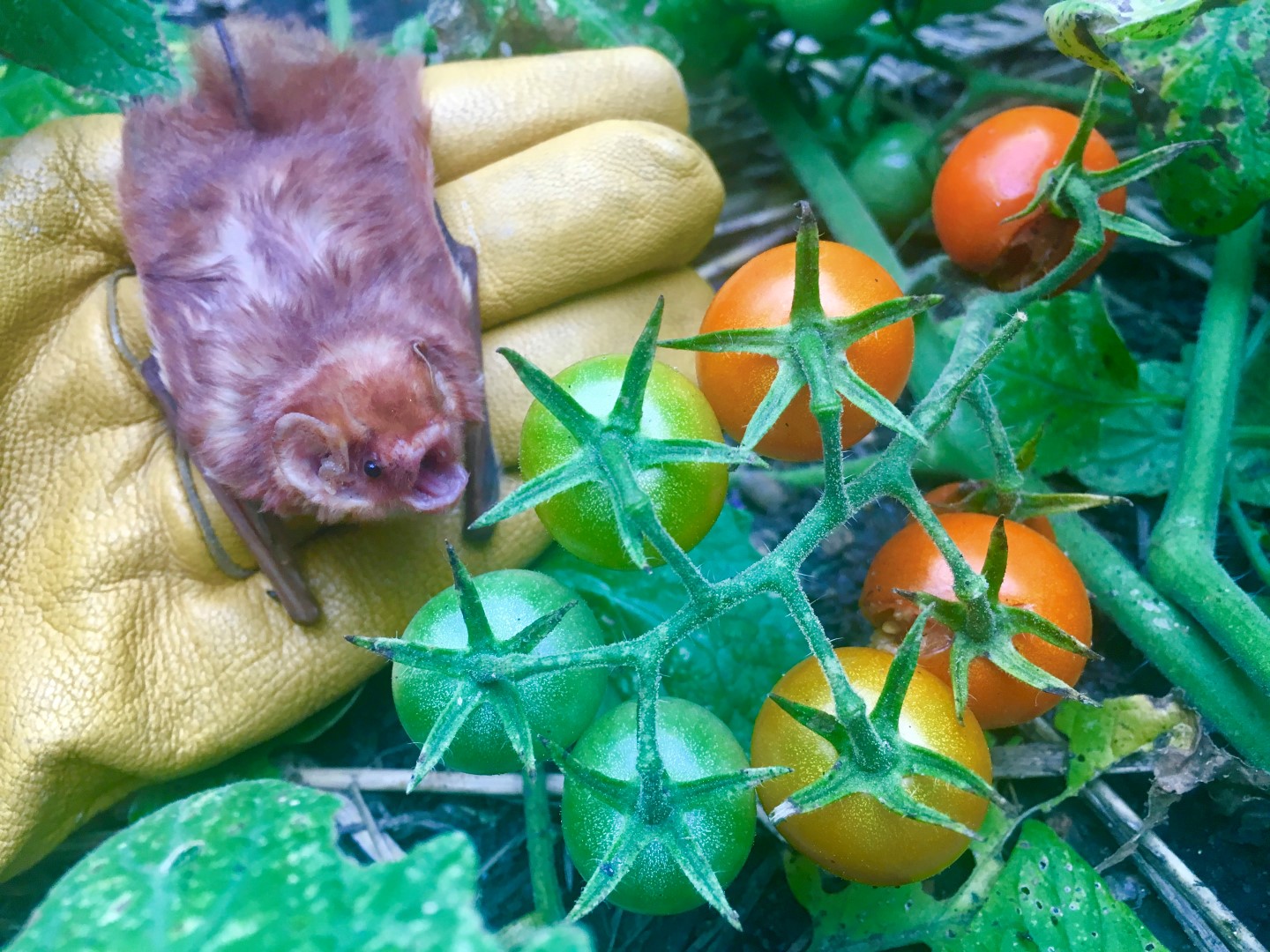
Our rehabilitating bats seem to like watching us work the garden and not focusing all our attention on them, for a change. We get to show them that humans can be somewhat beneficial for the environment, and it feels like a team-building exercise, with everyone having their role.
If your yard has limited open areas to allow bats to swoop down to your water feature, then you can elevate a drinking trough on top of Texas-style tomato cages (made from 6″ driveway mesh). We top the cages with metal roofing scraps lined with recycled billboard material (our billboard says “Please Drink Responsibly!”). We keep it shallow and dump it every day during summer to water tomatoes growing beneath.
Water is life – Bring some magic into your garden by providing a consistent source during summer droughts.
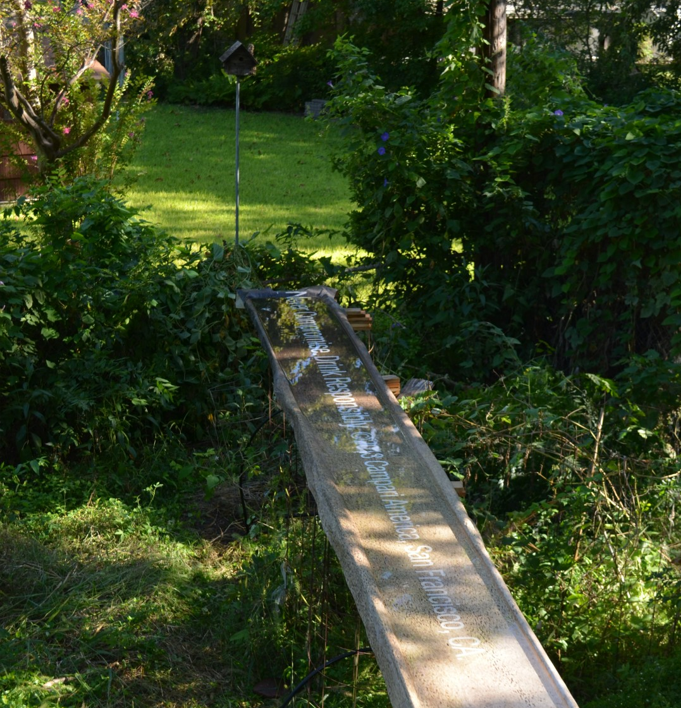
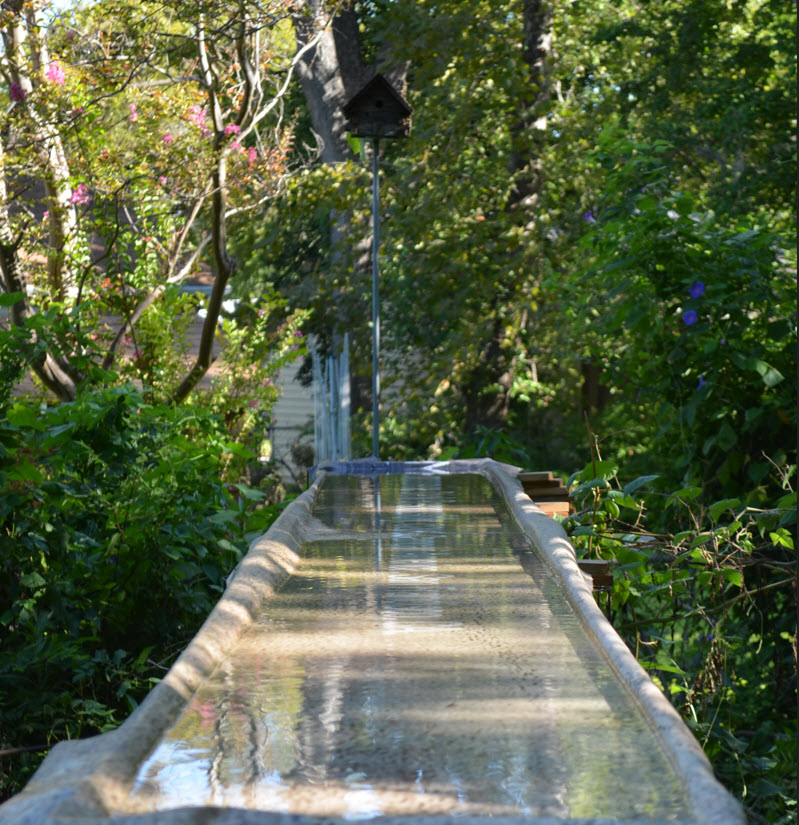
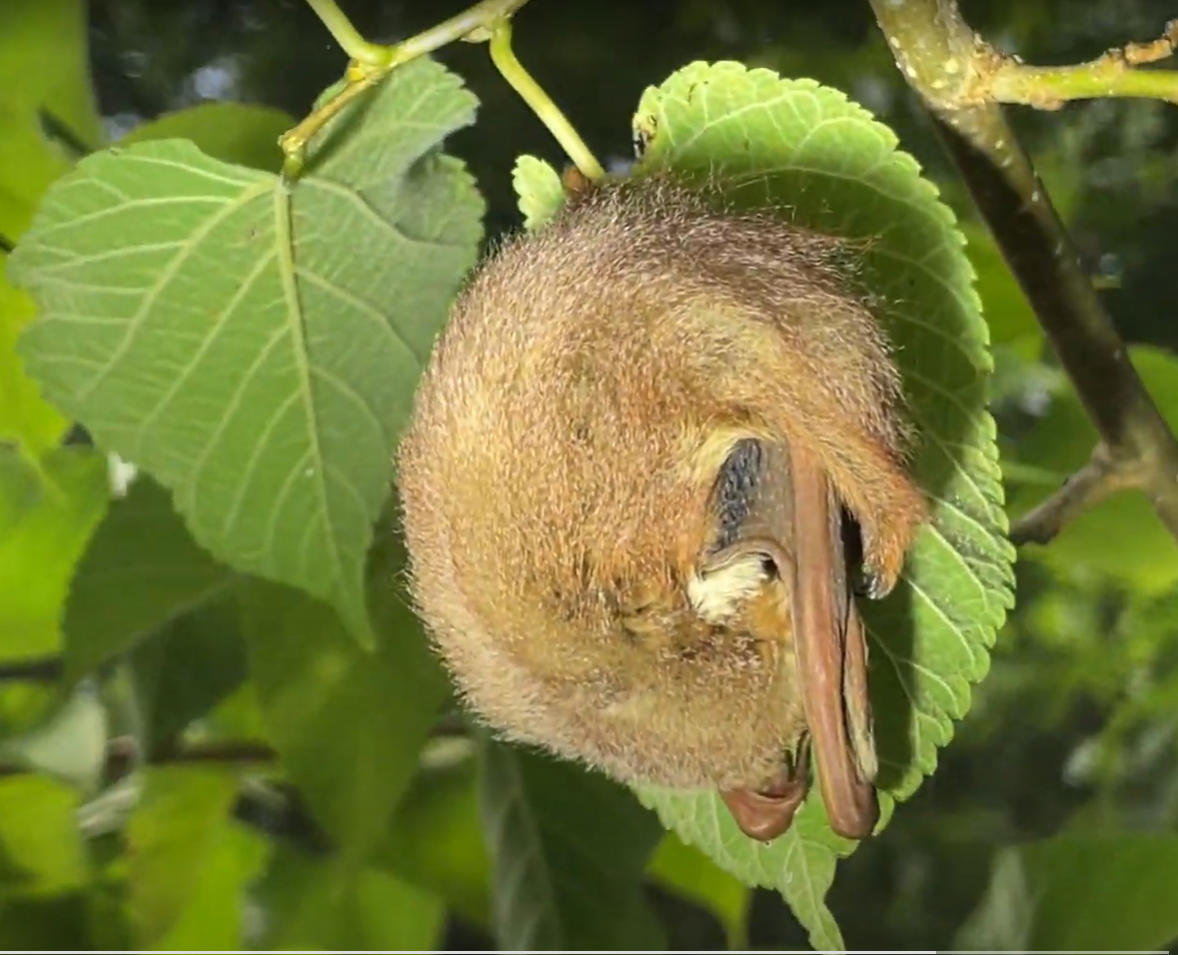
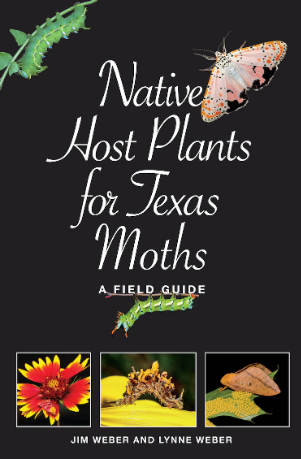
Native Host Plants for Texas Moths
A Field Guide
By Lynne M. Weber and Jim Weber
“Although they are far less noticeable to us (than butterflies), moths are essential to many other species, including the plants they pollinate and the animals they nourish. In their caterpillar or larval form they provide a primary source of sustenance for birds, and as adults they feed everything from tiny bats to large mammals. Like butterflies, moths require native plant species they recognize in order to lay their eggs.”
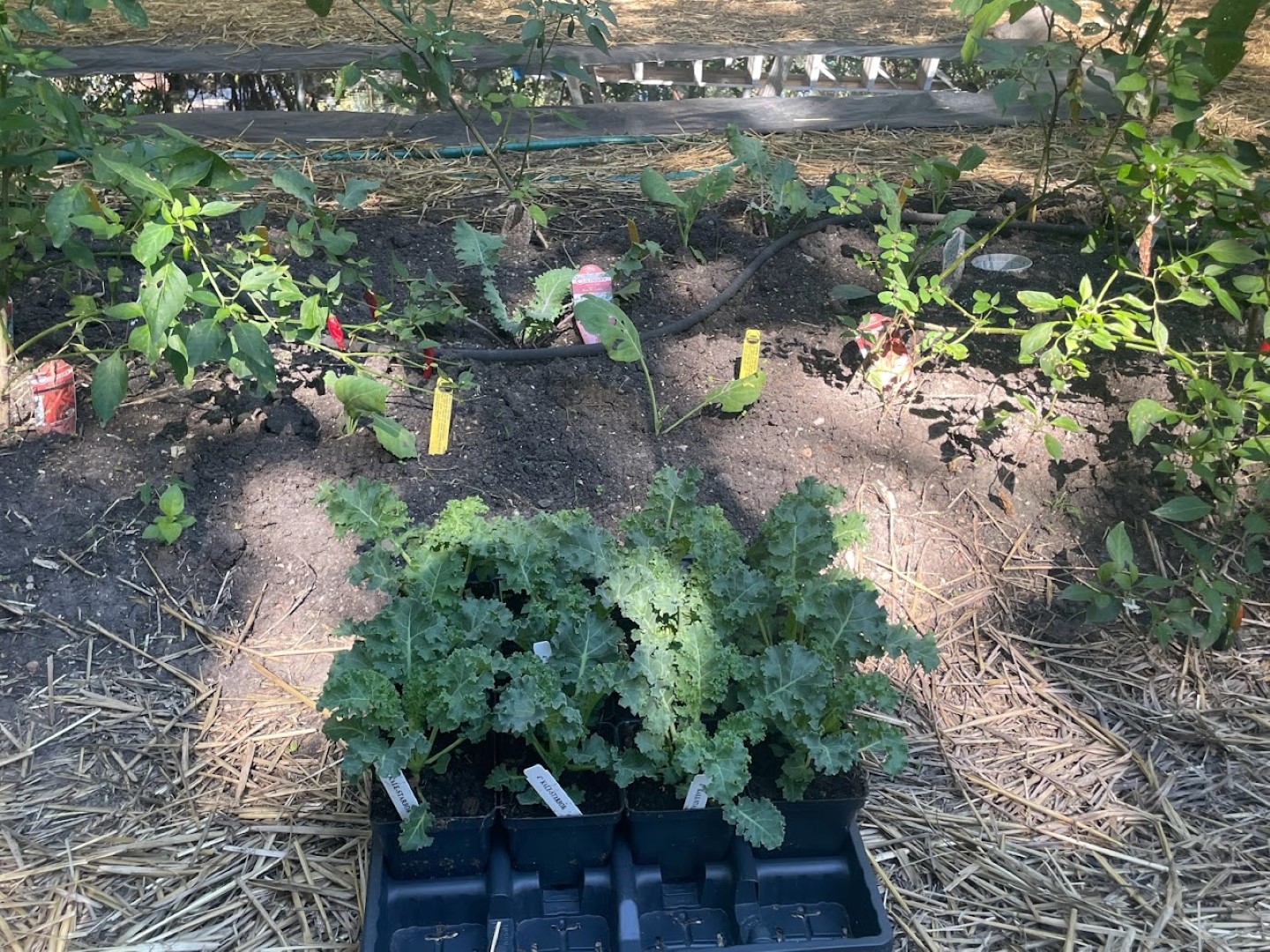
Nectar Plant Bloom Cycles
Lady Bird Johnson Wildflower Center Plant Search
This wonderful source will allow you to choose native plants that bloom at different times of year. Native plants are of utmost importance for moths, as they evolved alongside them and they fit into well-established niches in our local food web.
Nectar Plants
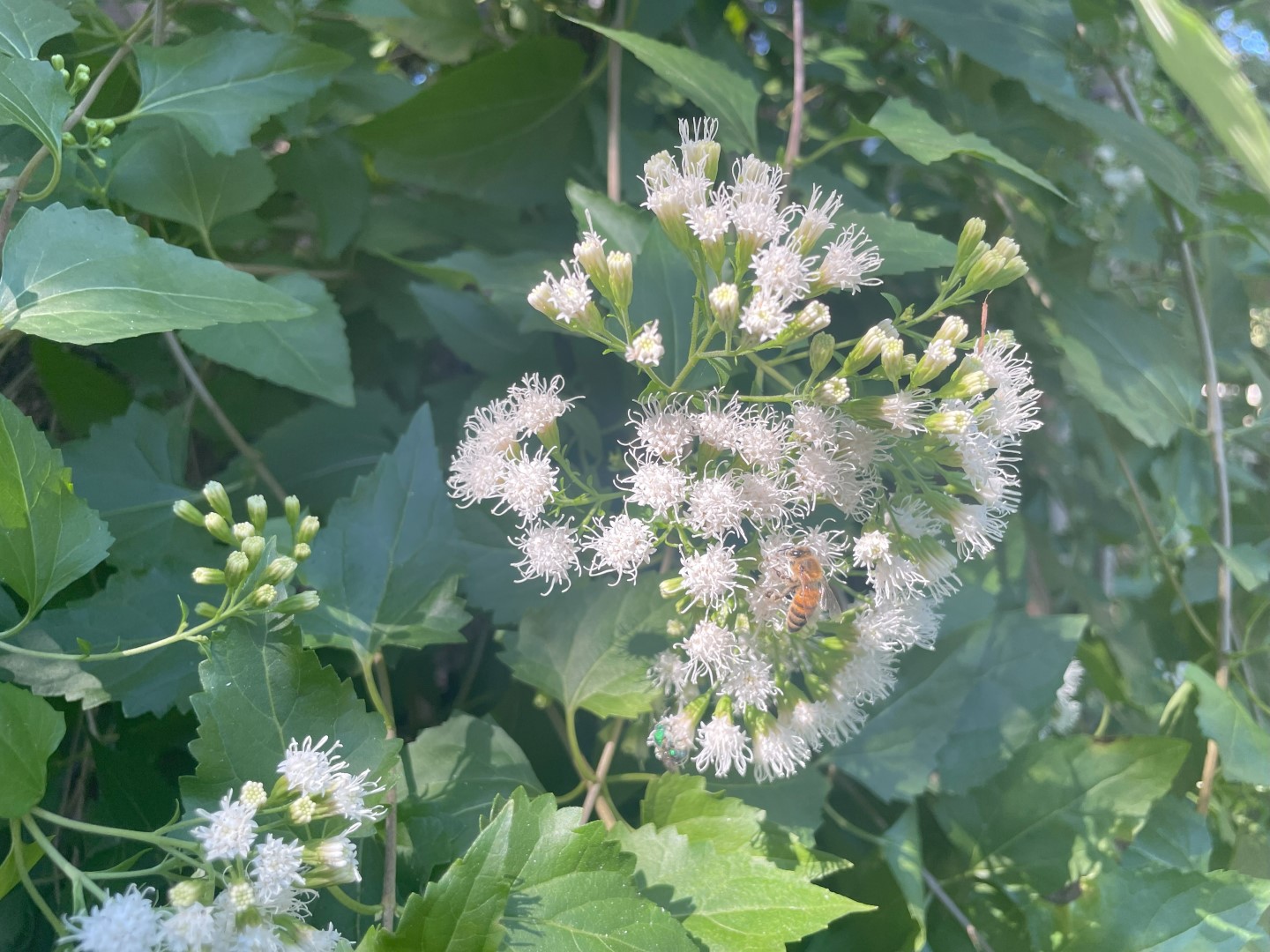
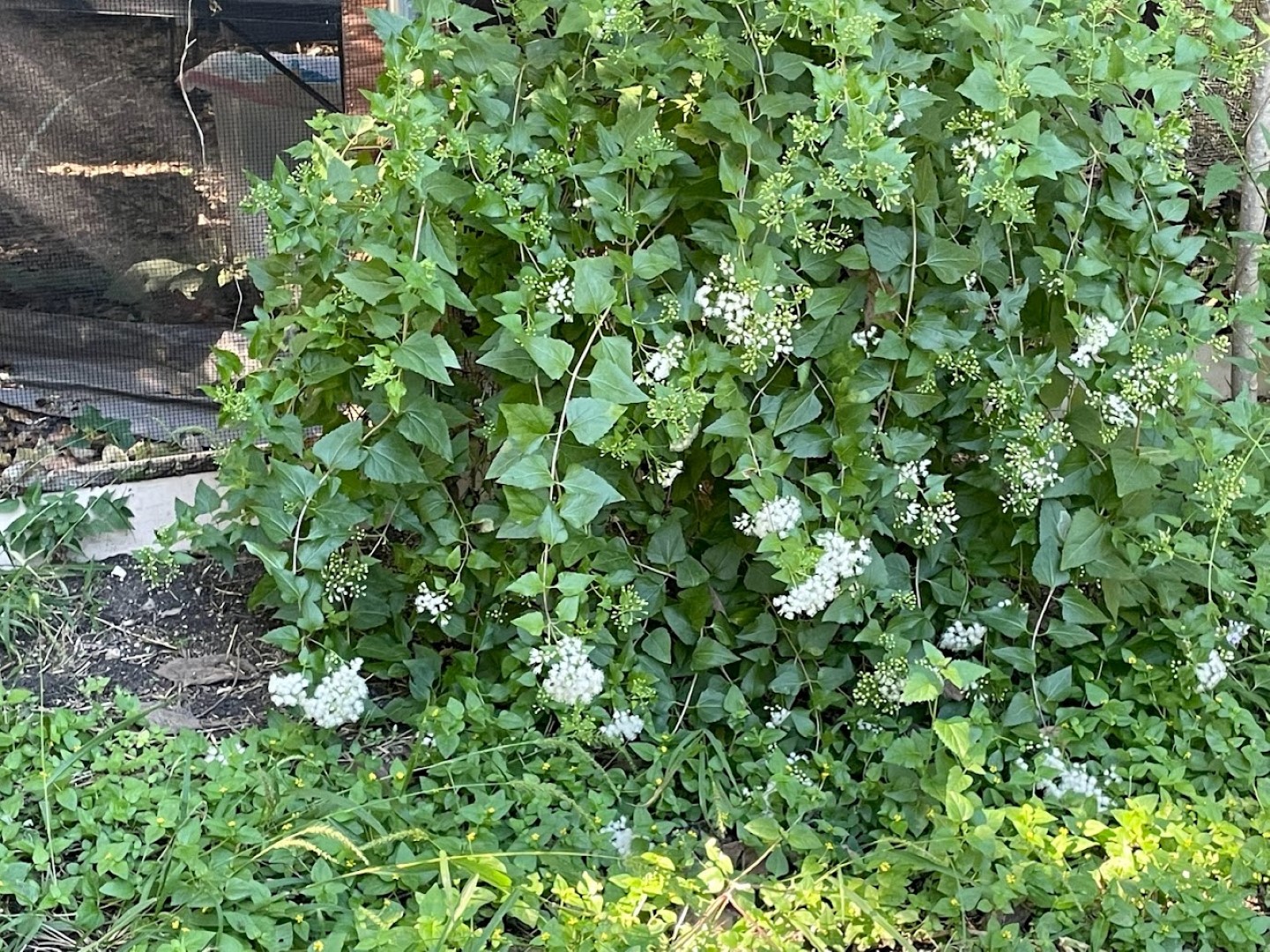
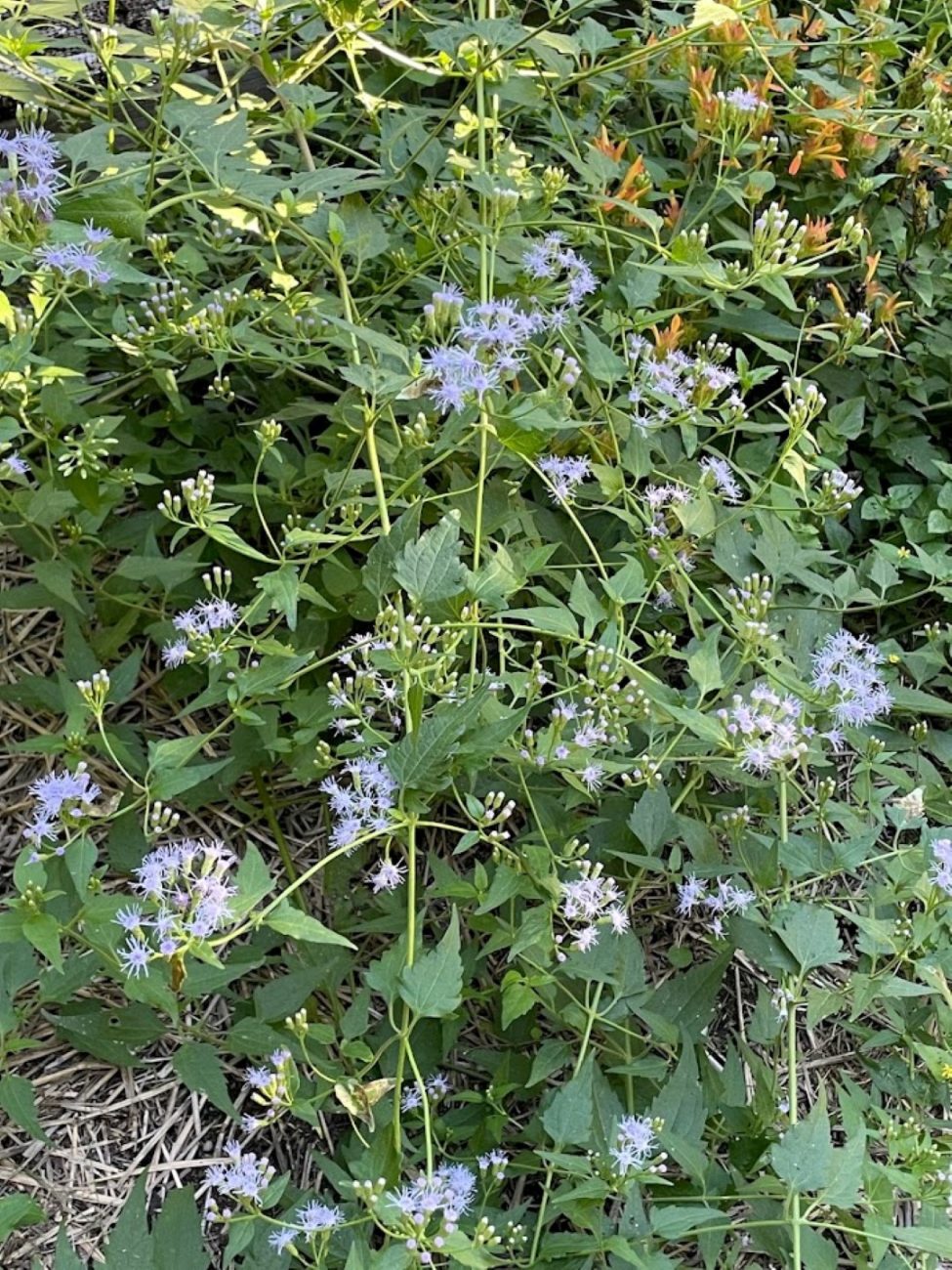
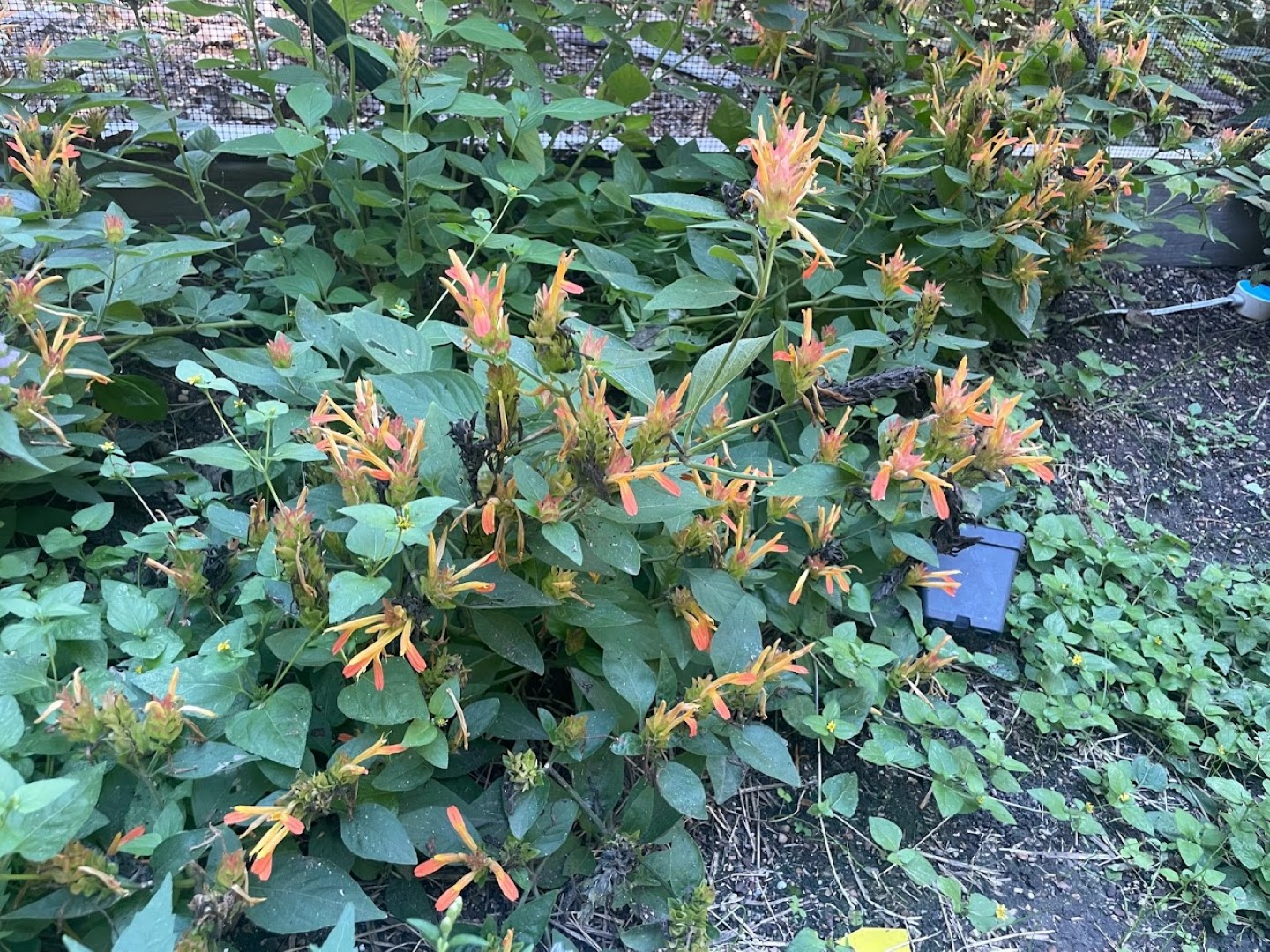
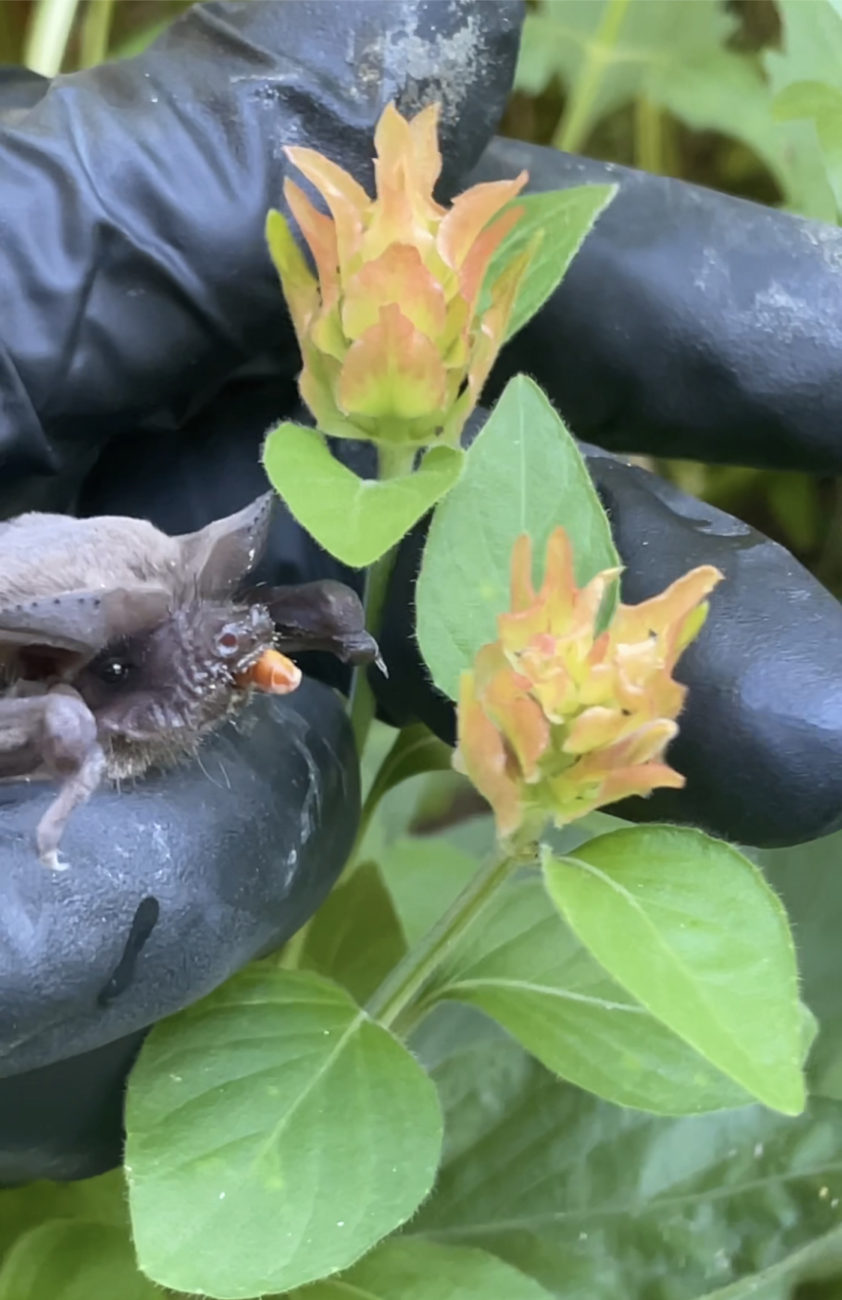
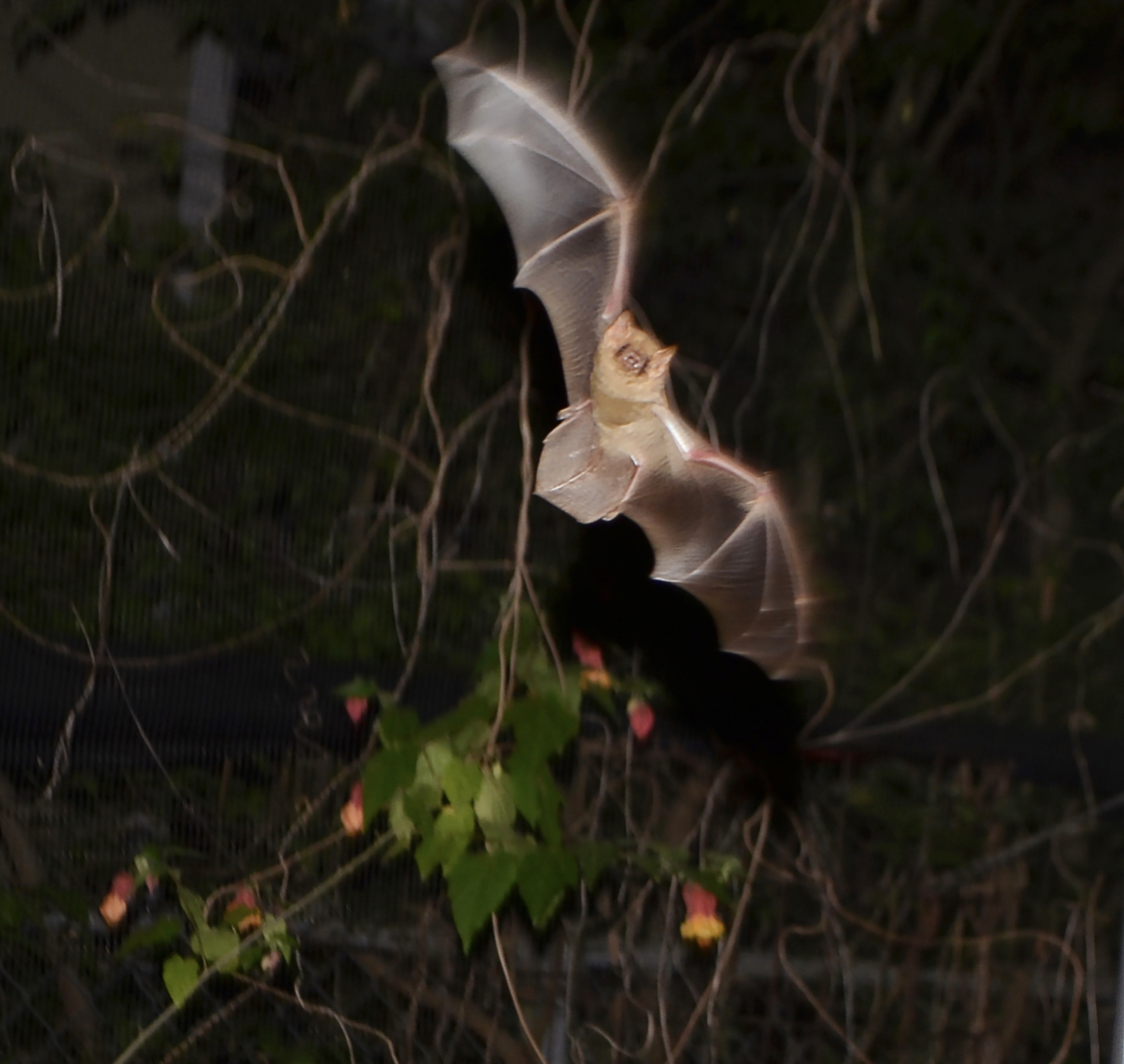
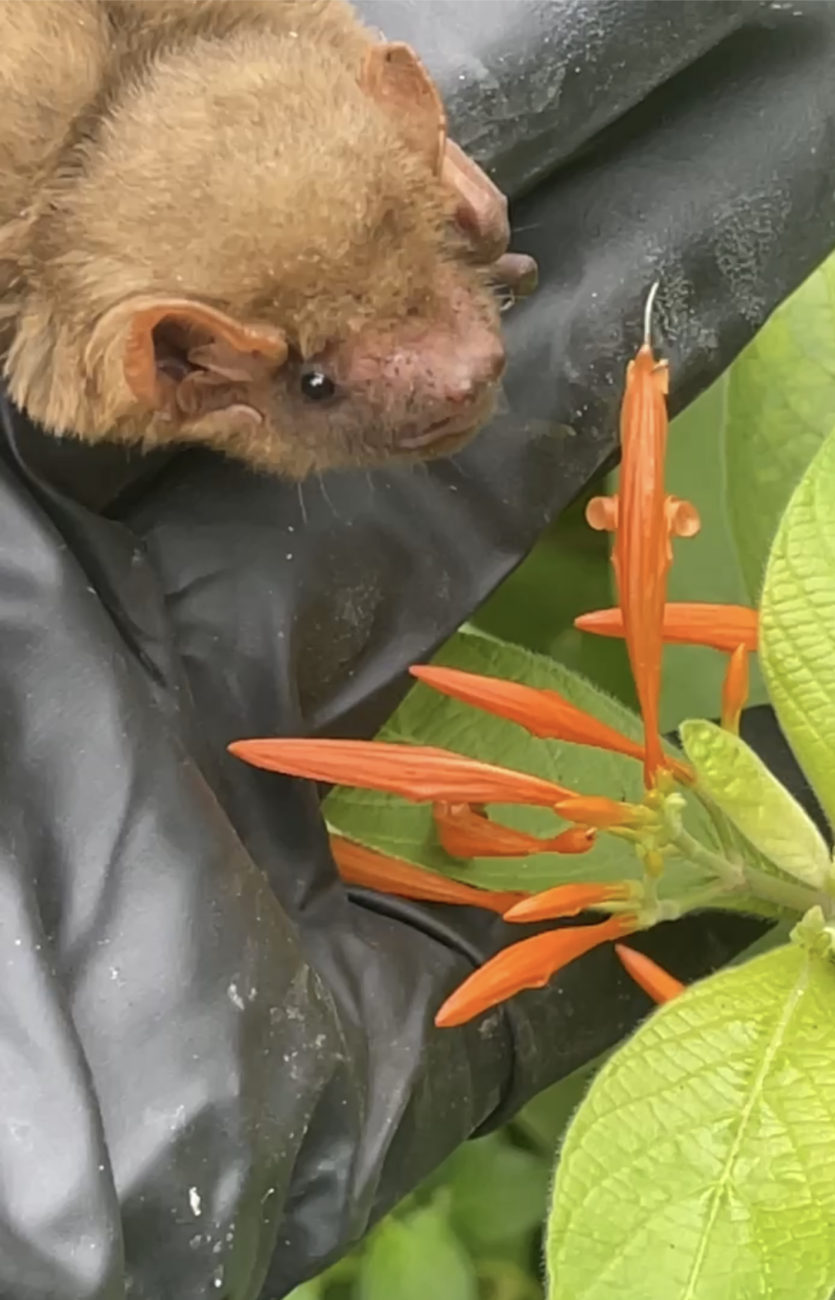
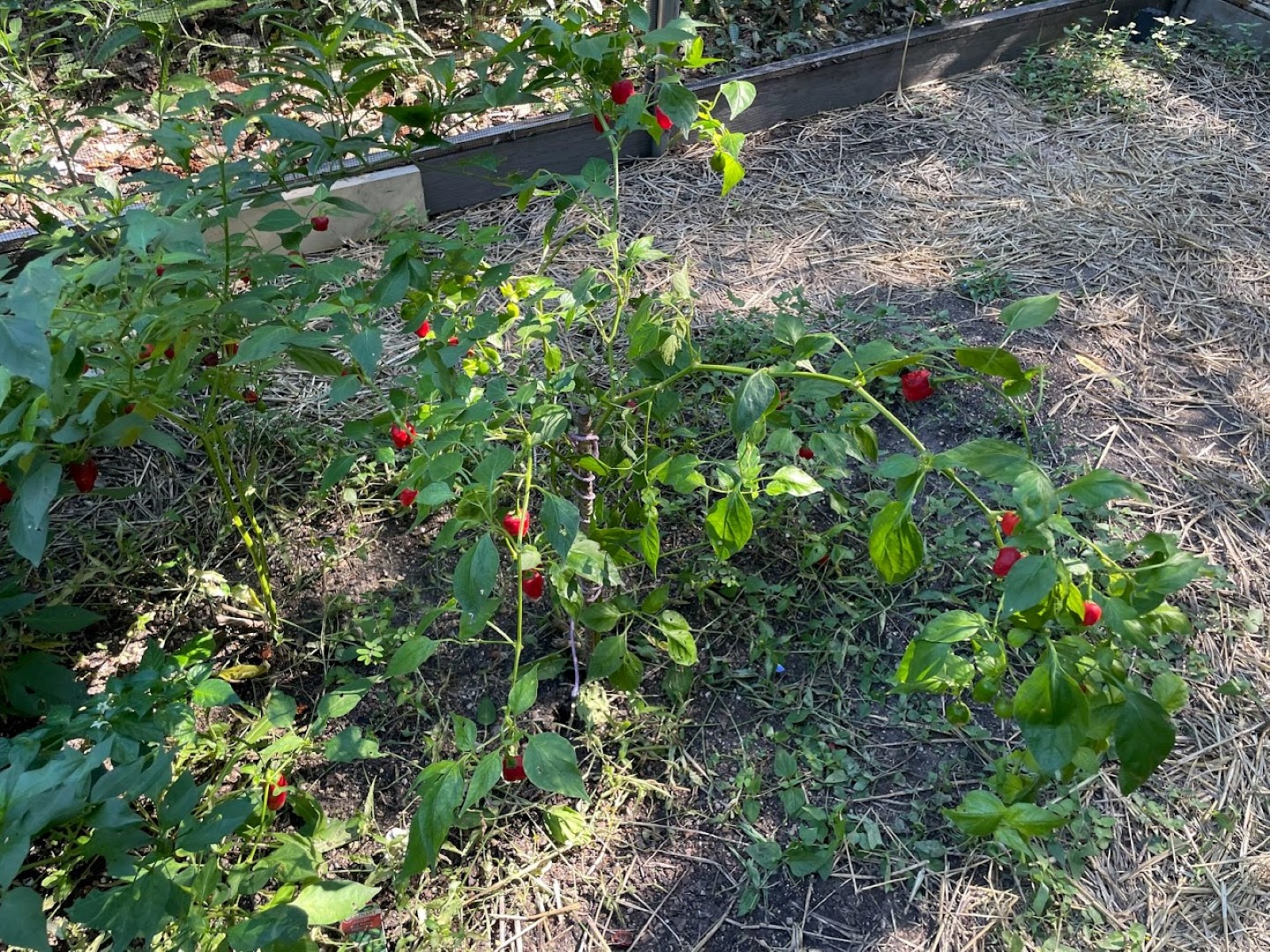
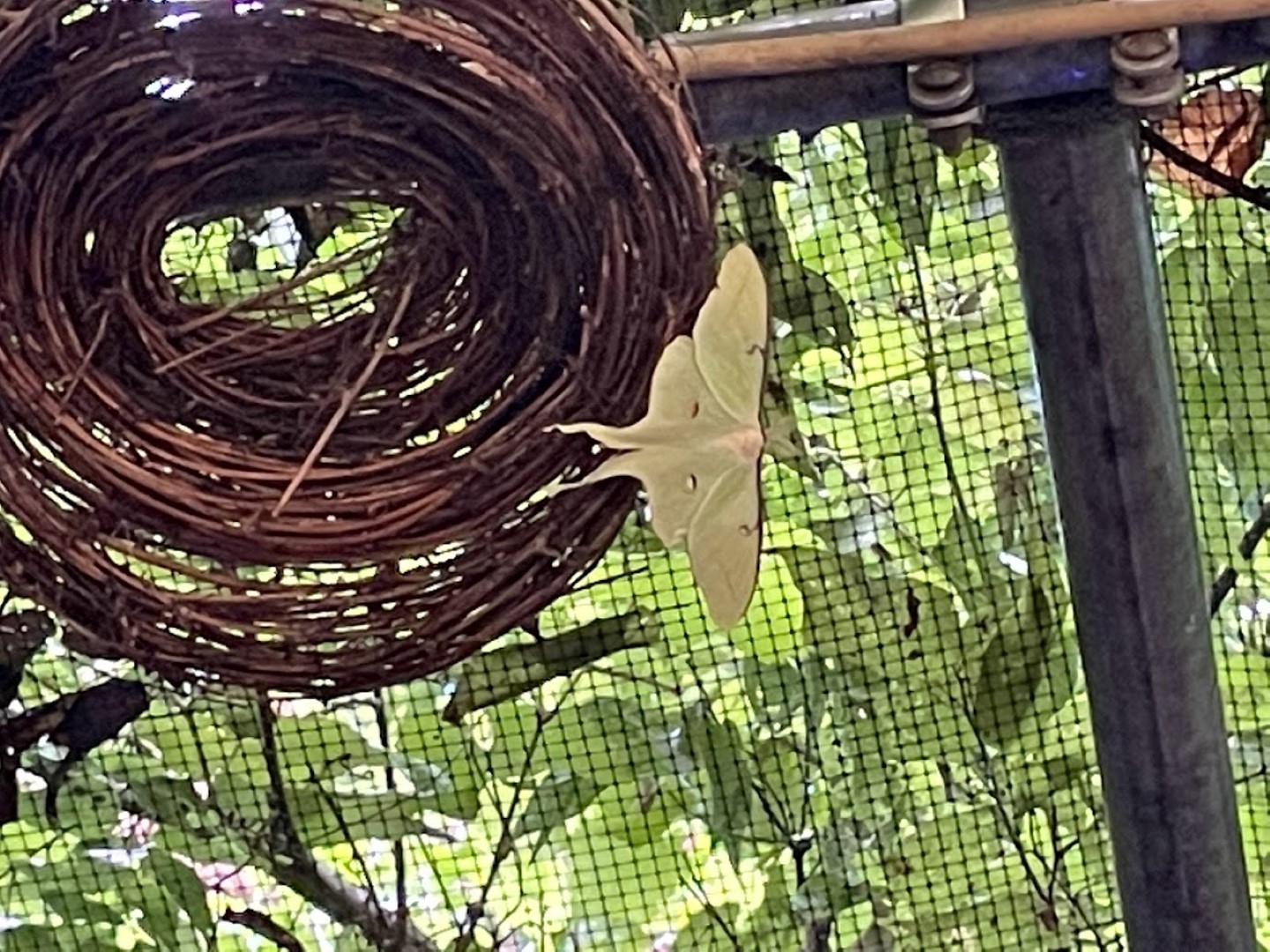
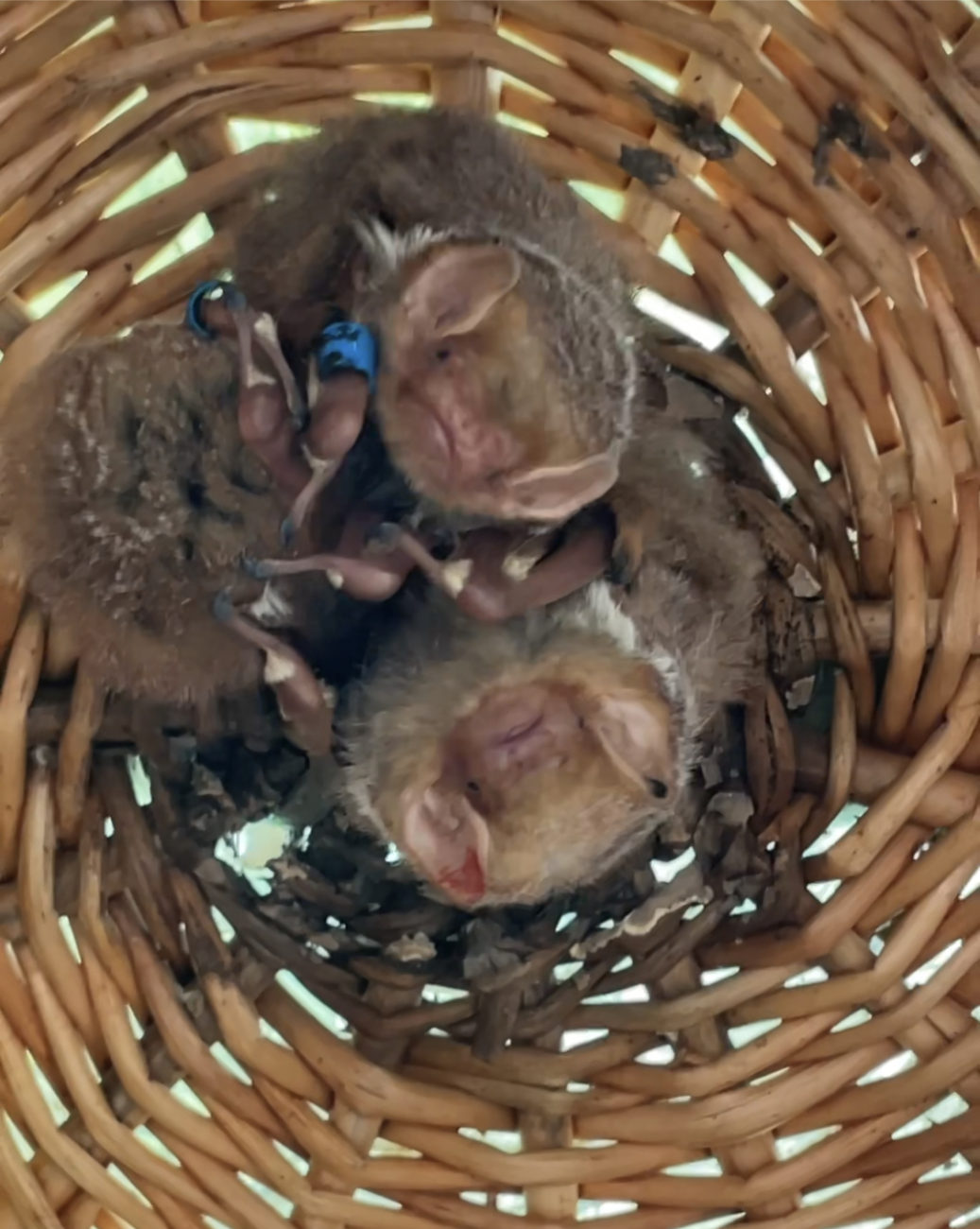
Moth Garden in Full Bloom
Ever wonder about bats’ pest control services? The moth wings we see in the garden every morning are evidence that bats are protecting crops all night. They do backflips as they catch the moths (we call those manuevers “SnackroBatics”) and they fly off consuming the moth while shucking the wings.
Ask us about bee boxes and wax worm moths!
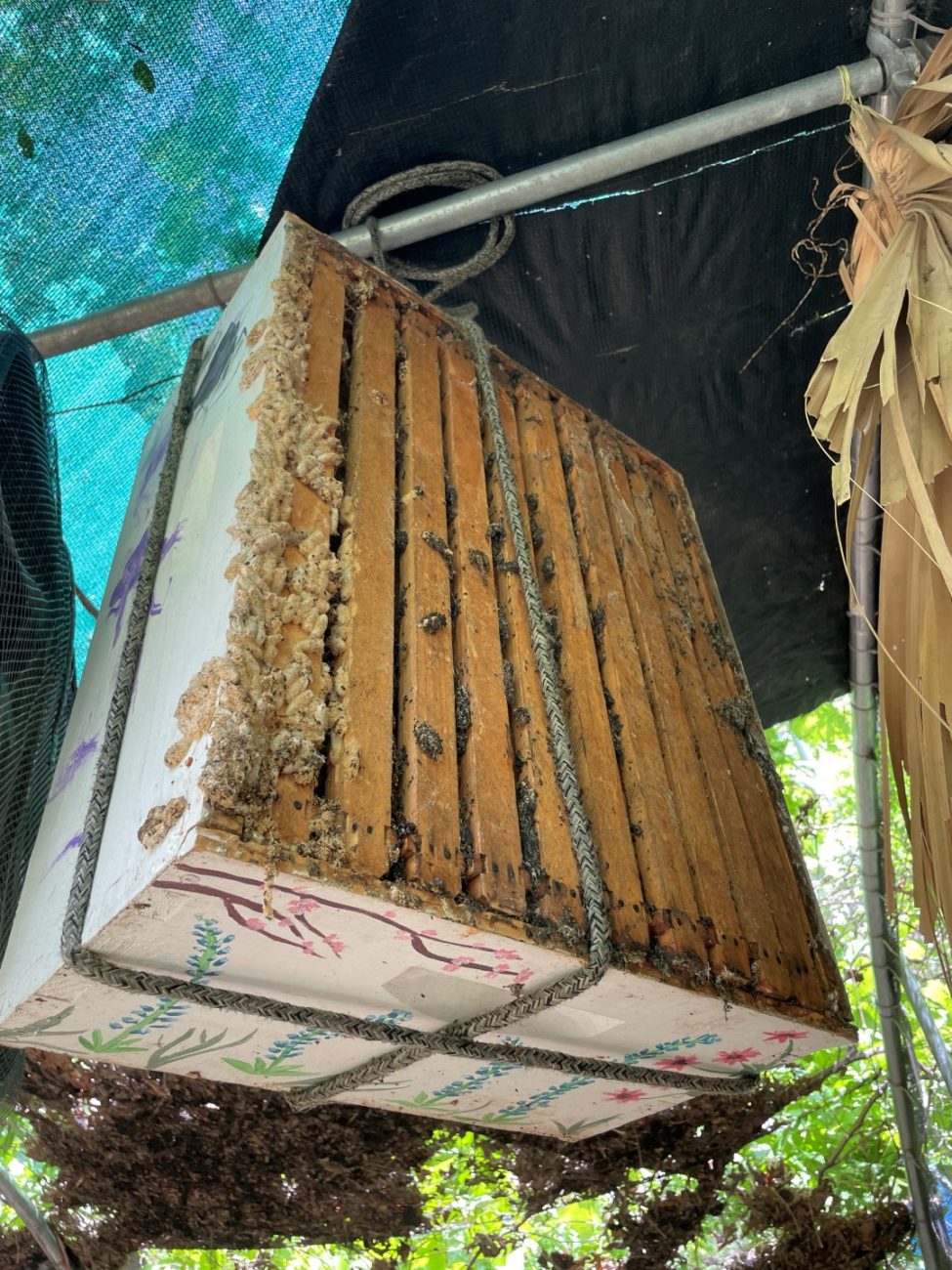
It’s not quite so helpful for honey producers, however. If bee colonies are not thriving, wax worm moths move in, just as in nature, but no one wants worms in their honey!
This bee box was brought to us by Mike Mendez, allowing the moths to hatch in our flight cage (instead of his bee yard) and providing hunting practice for rehabilitating bats. Once the moths have hatched, he will clean them out and return them to the site he manages out at Jester King Brewery, possibly with some newly-trained bat protectors. Thanks Mike!
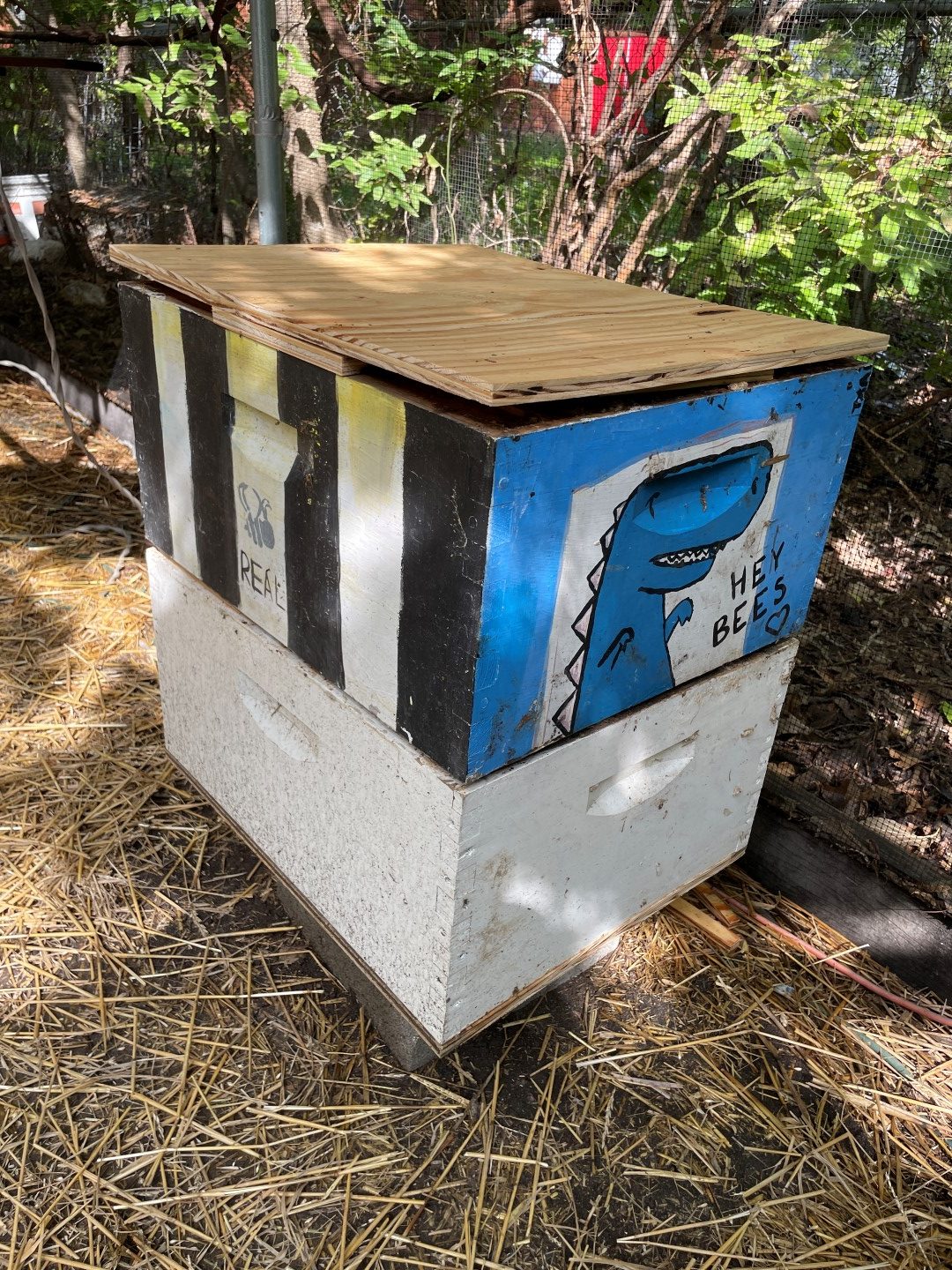
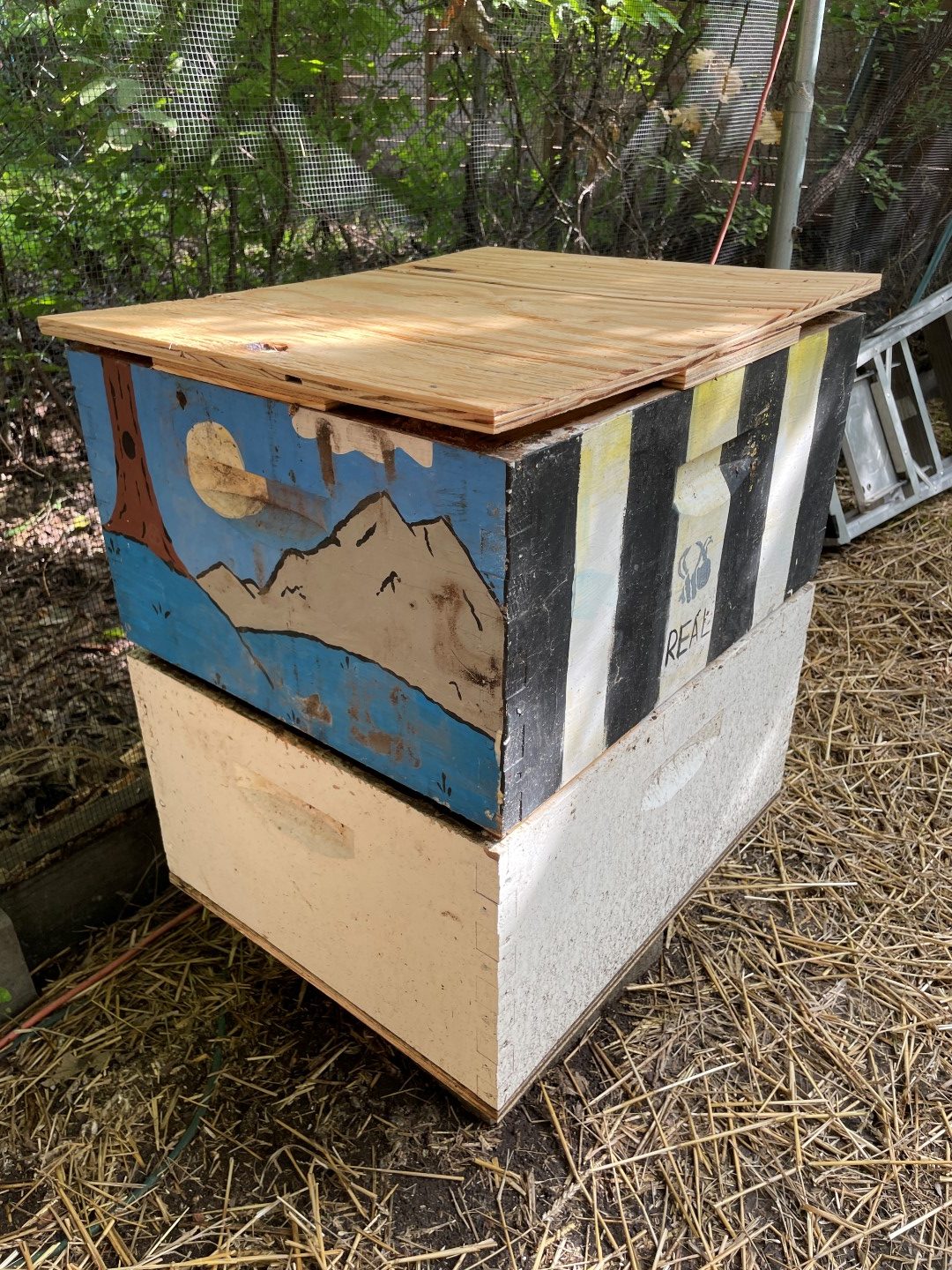
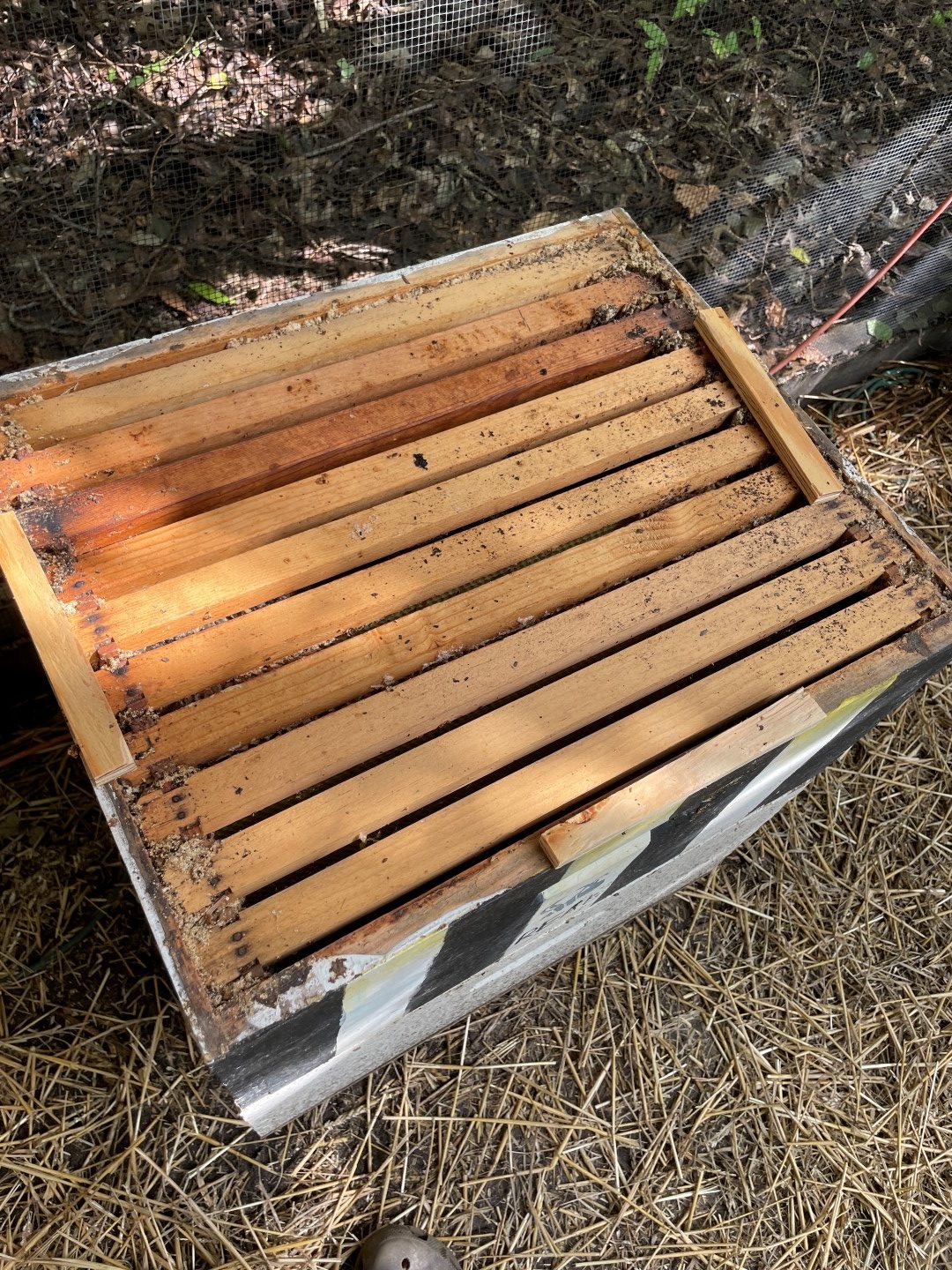
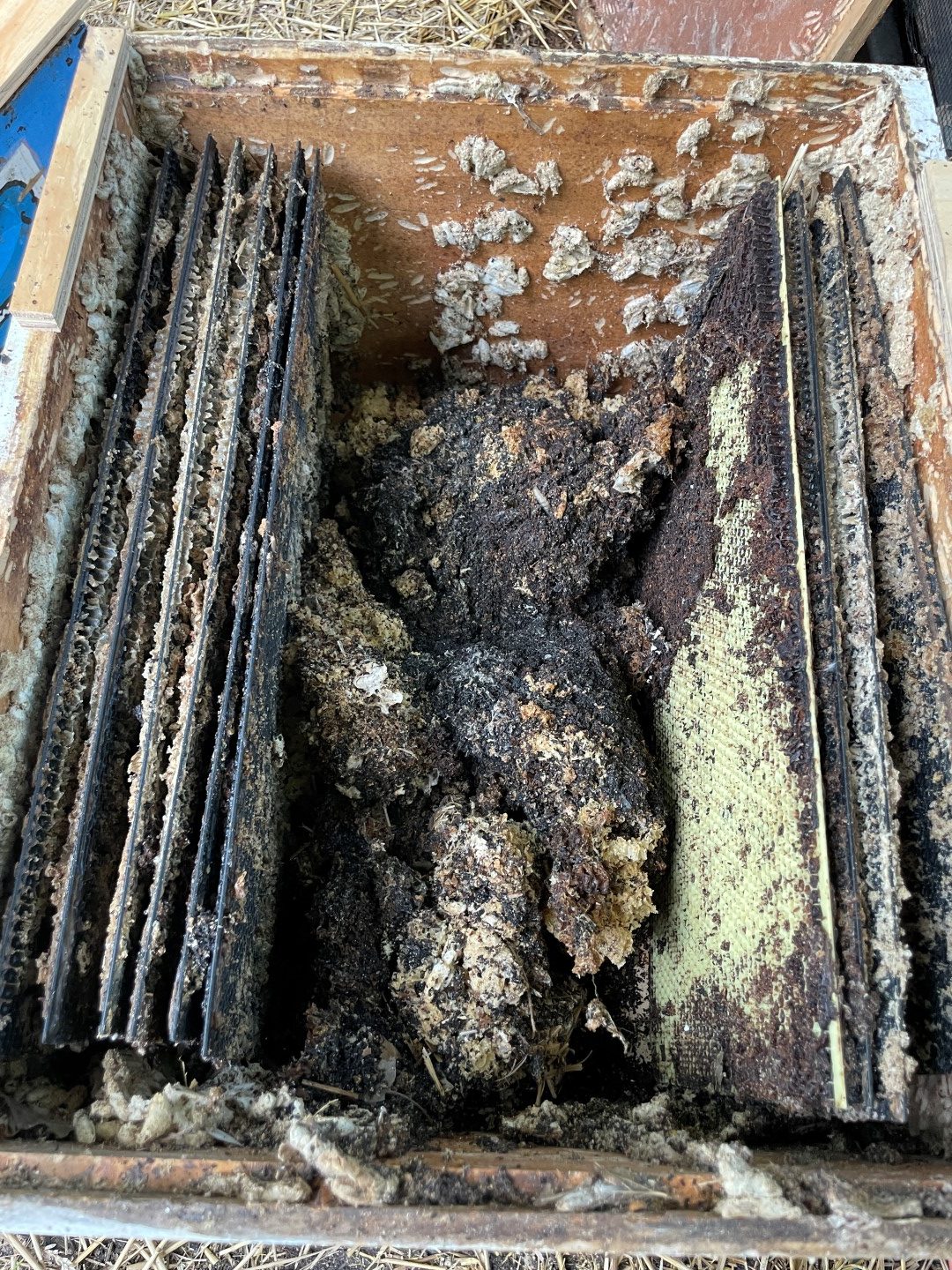
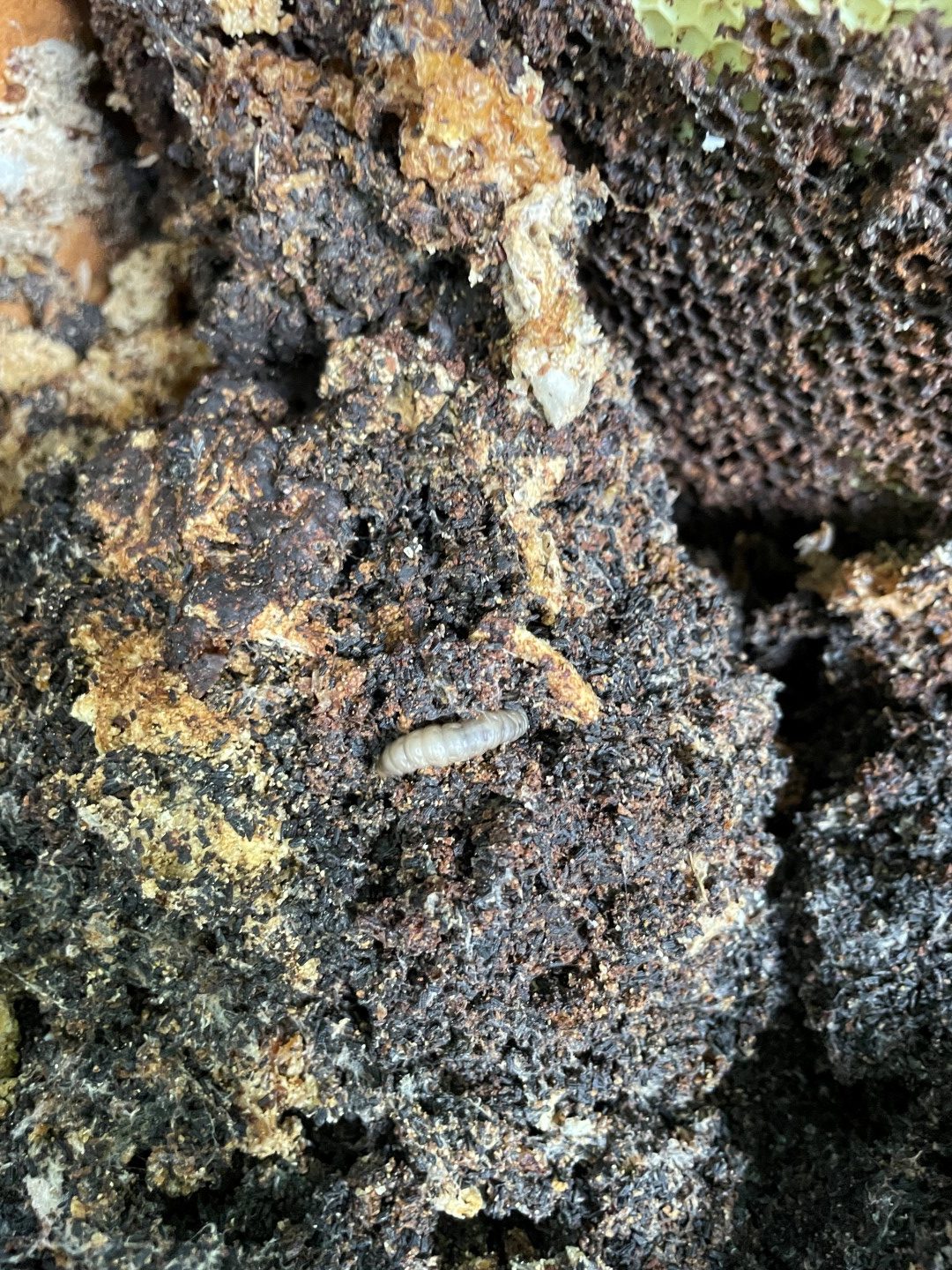
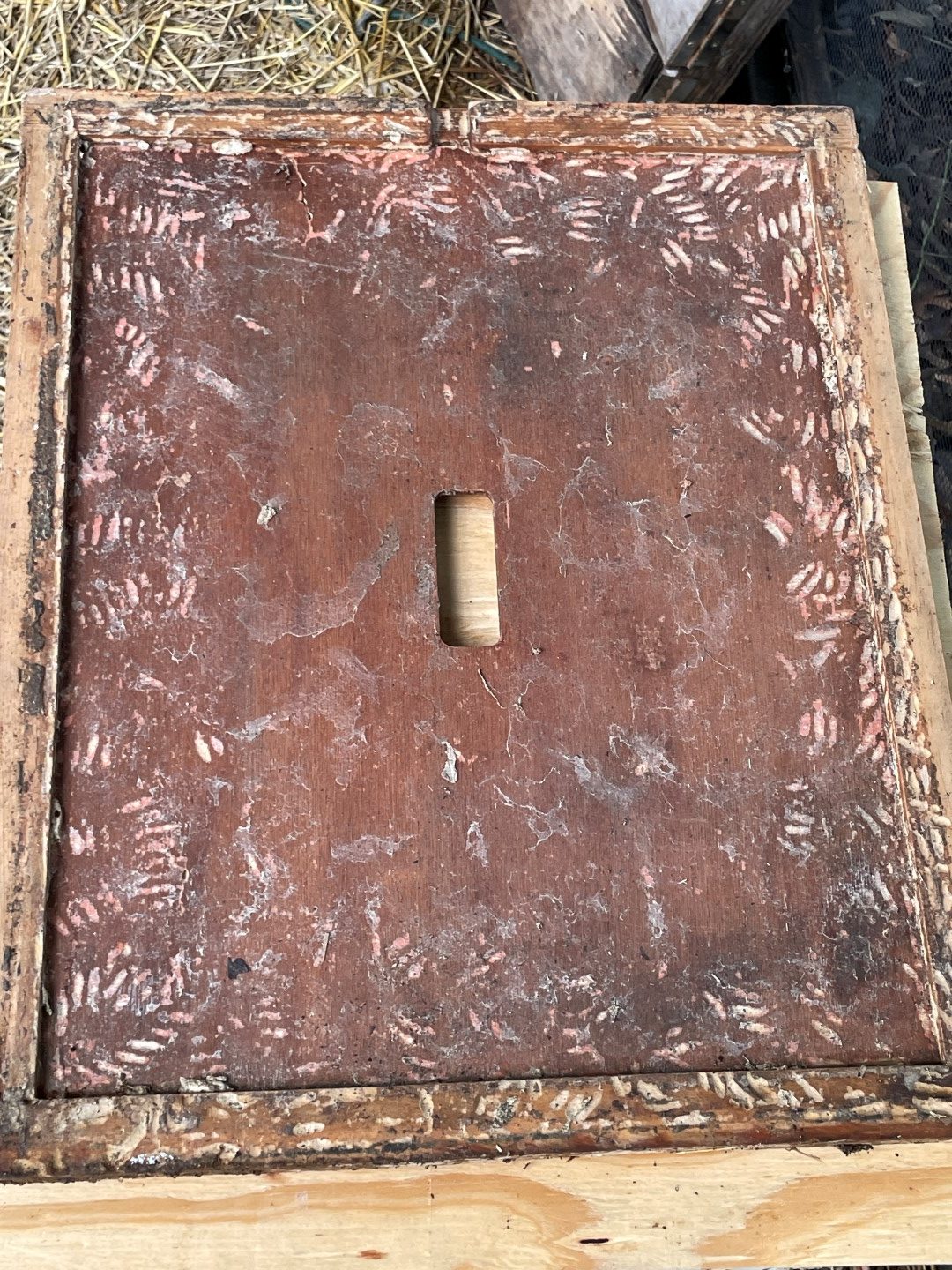
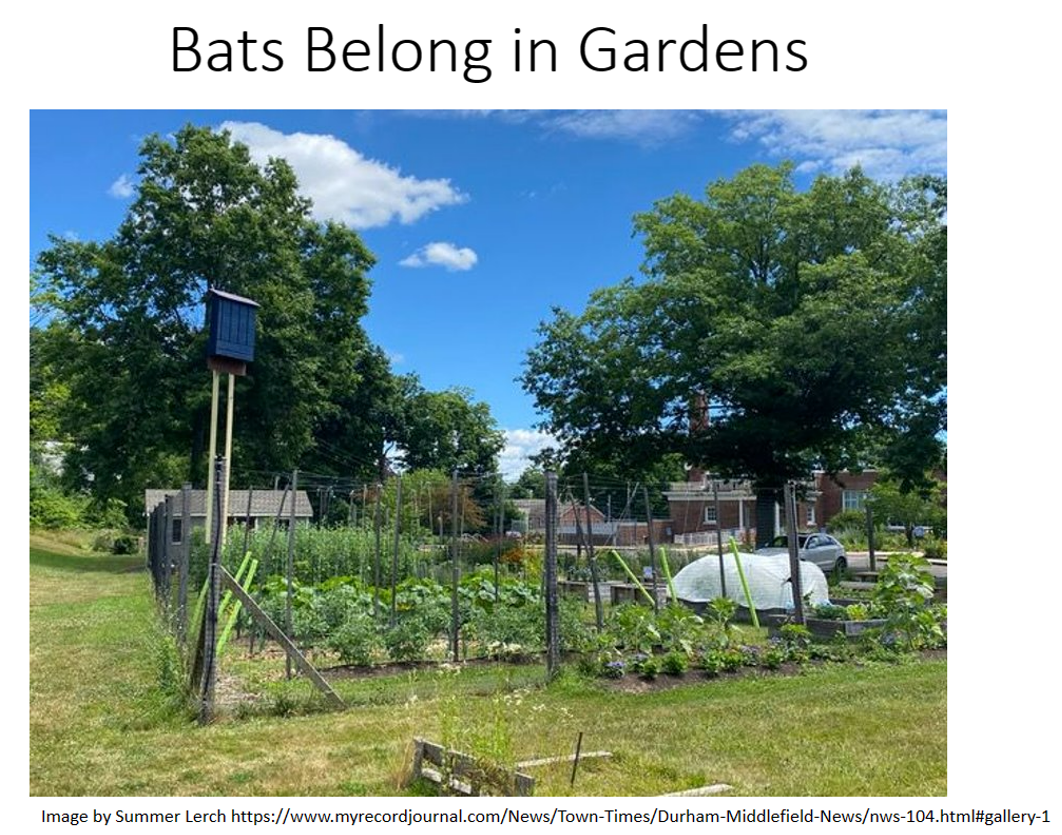
Bat boxes can be a wonderful addition to a home garden. But a nearby standing dead tree could provide more stable thermal conditions. Also, about half the bat species in Austin don’t use bat boxes. Many roost in the leaves of trees in summer months (mimicking dead leaves) , dropping into deep piles of leaves on the ground to survive freezes.
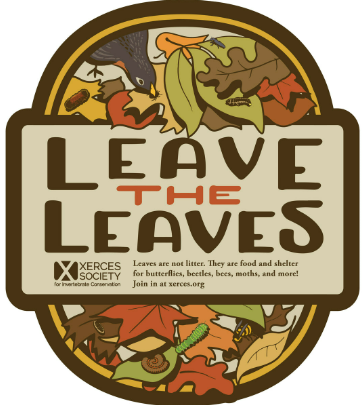
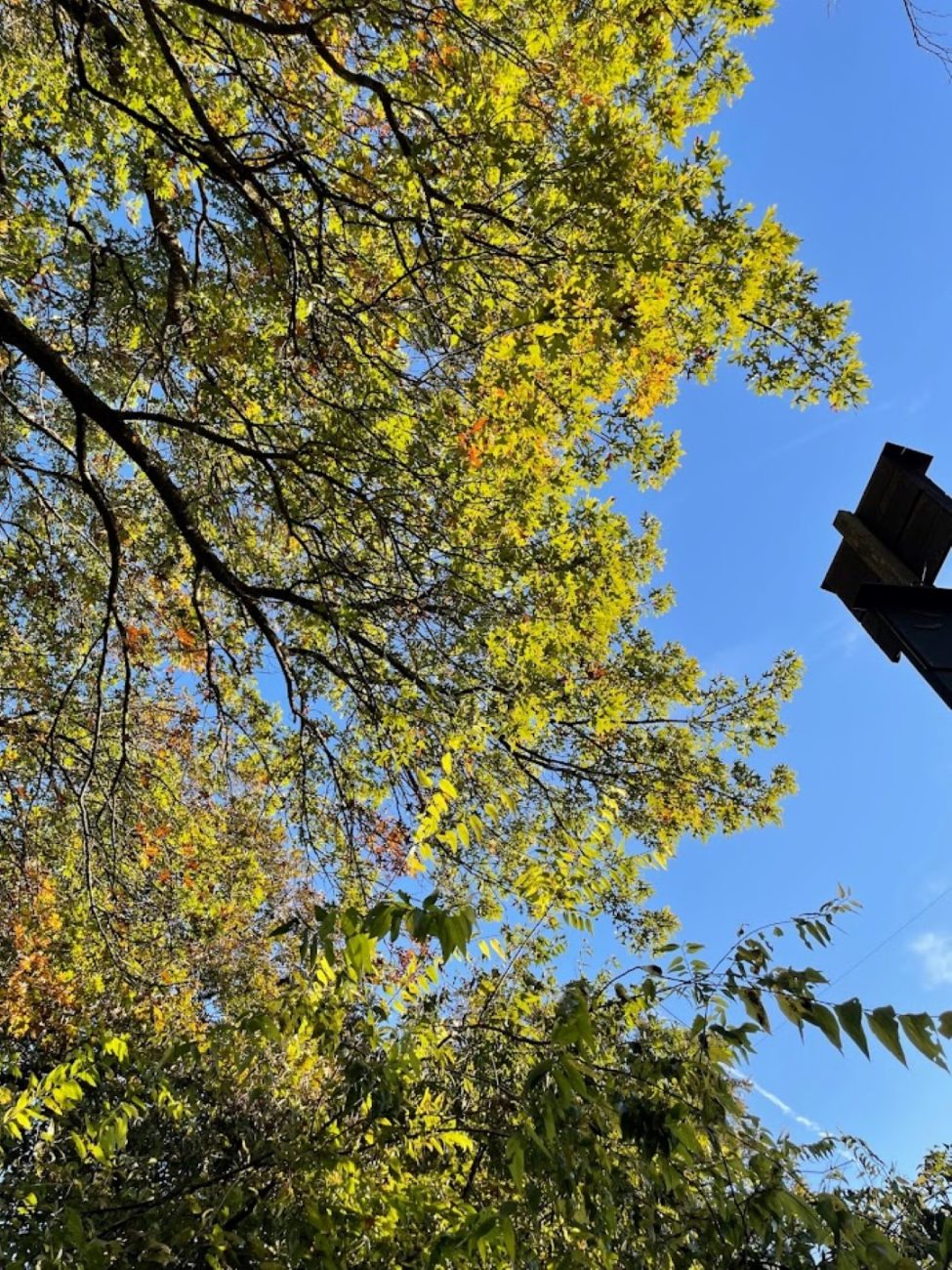
See our Palm Tree page and this video for more information
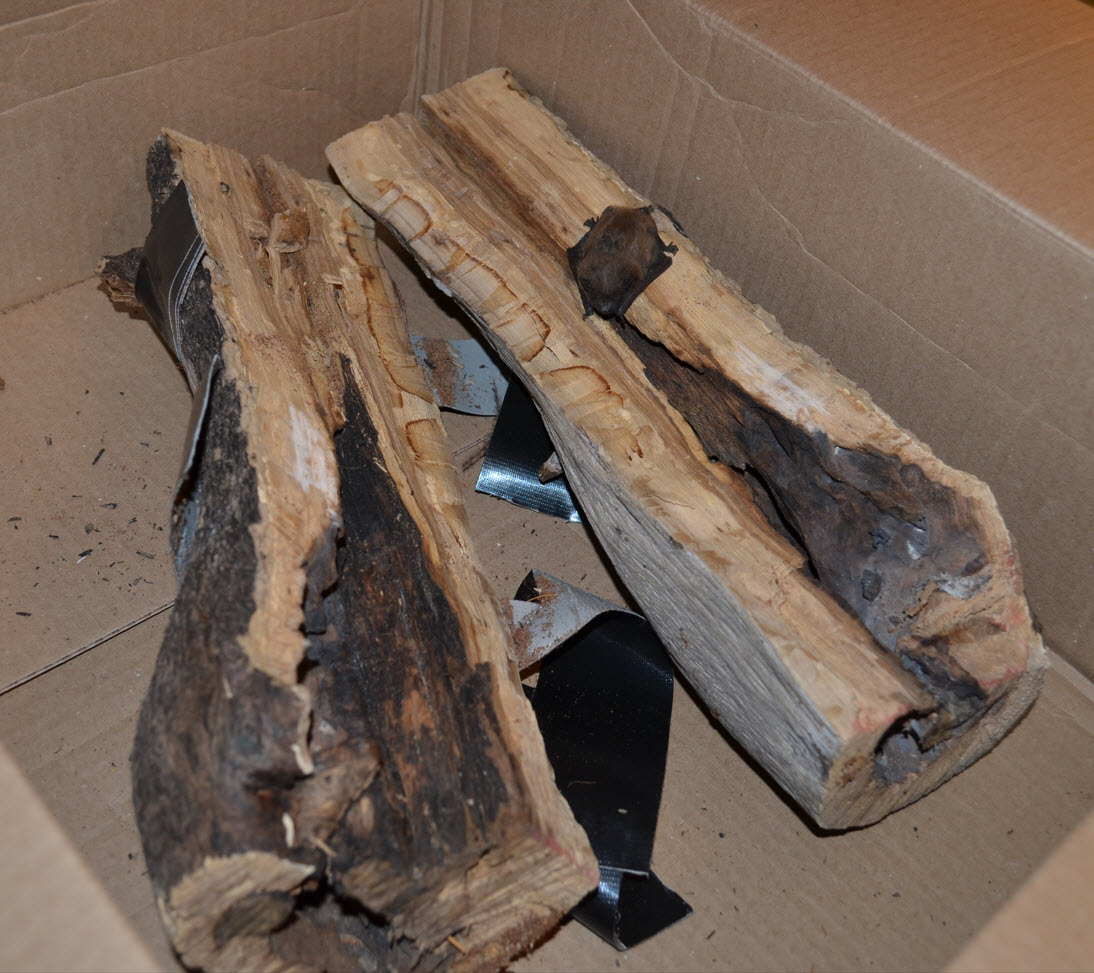
A flight cage full of moths is key for rehabilitating bats practicing to be successful in the wild.
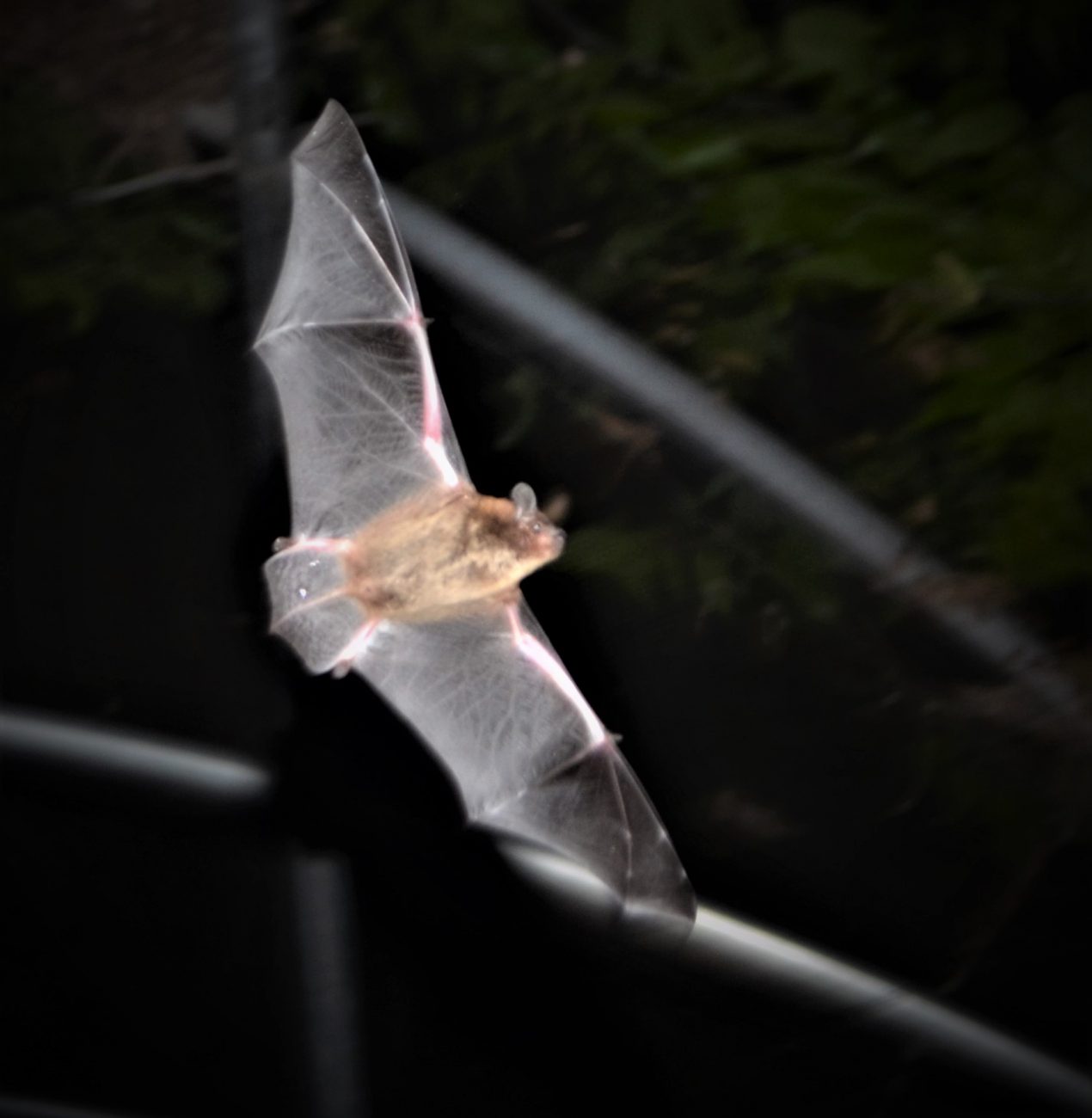
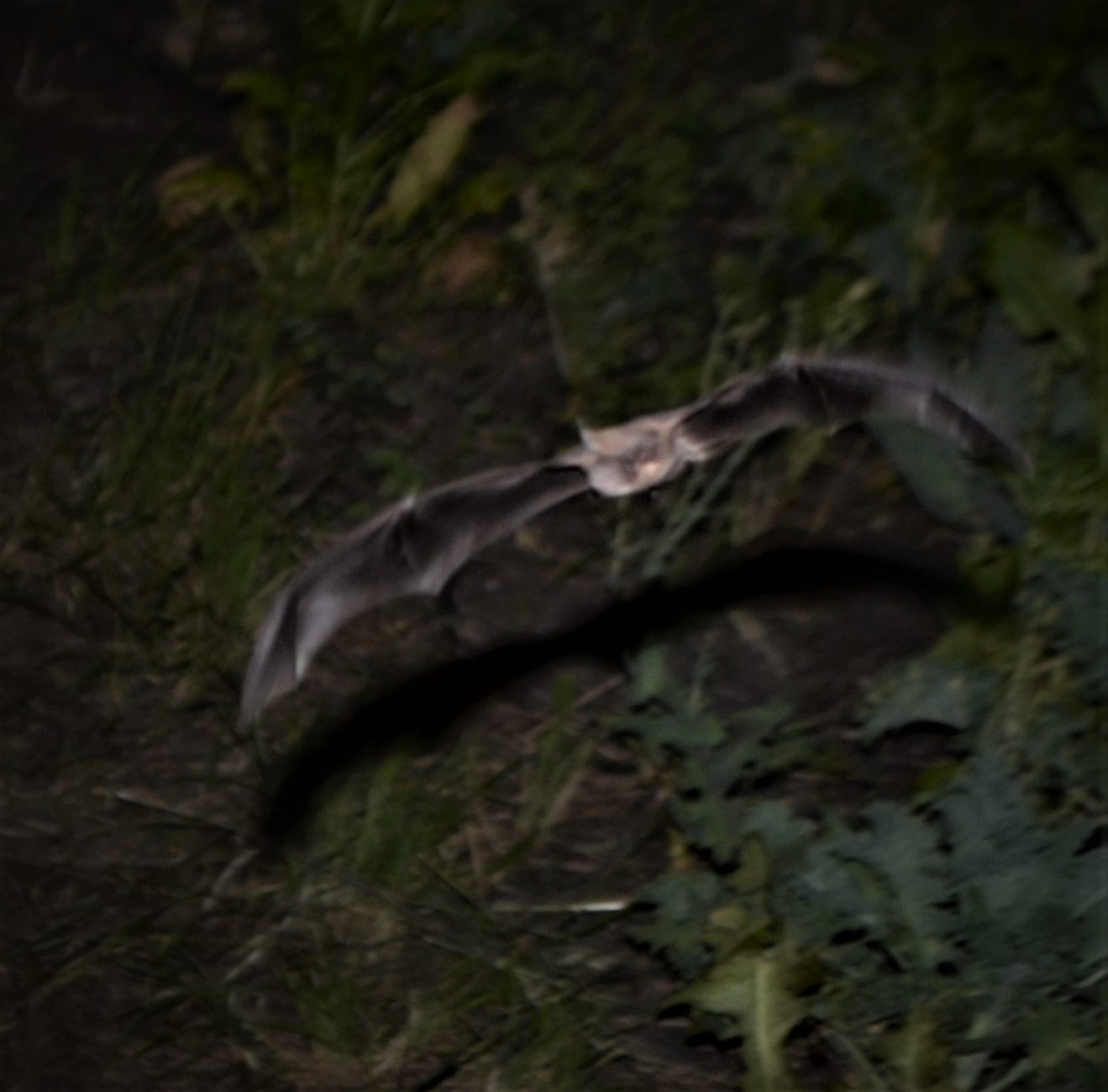
When moths hear echolocation of an approaching bat, millions of years of evolution kick in and they employ various defense mechanisms. In our aviary some fly erratically while others drop to the ground to evade the bats. Normally dropping works well as they hide in the grass, but in our fight cage they often drop into the bats’ drinking troughs. Each morning we go out to rescue the moths trapped by the surface tension of the water.
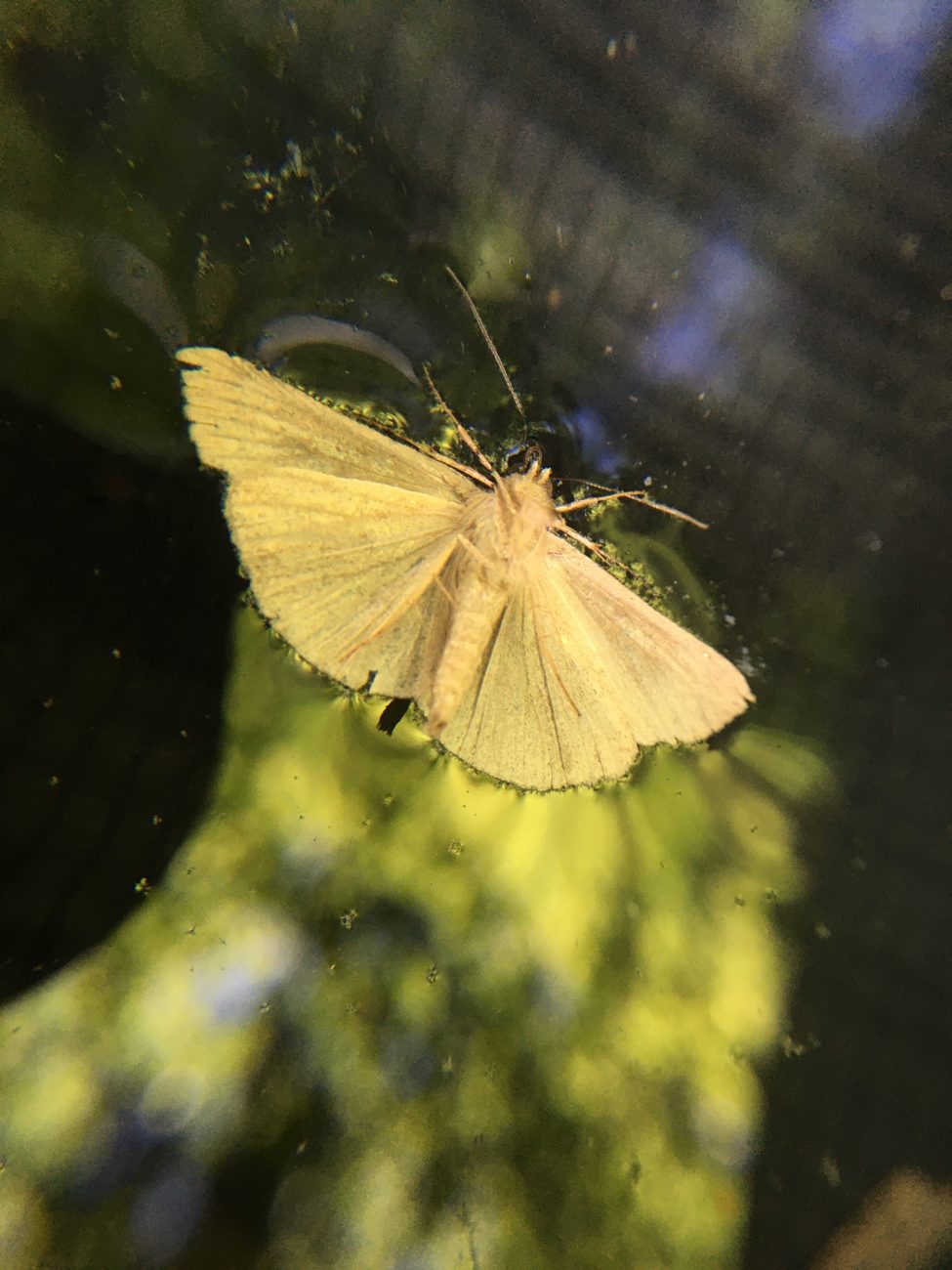
Morning moth lifeguard duties

Soon the brassicas will have served their purpose. We’ve eaten lots this winter, but as the insects begin to ravage them in the spring, they form a bitter latex in their leaves that makes them unpalatable to the larvae, but also to us! Soon we will replace them with a cover crop, to fix nitrogen in the soil and protect the soil from the hot summer sun.
And we’ll plant the winter garden again in the fall.
Cycle of life.
















One of the Texas Spiny Lizards in our flight cage caught a Praying Mantis! We love the Mantis. We’ve seen them sizing up the bat pups as if thinking “I can take you”! Don’t think so!
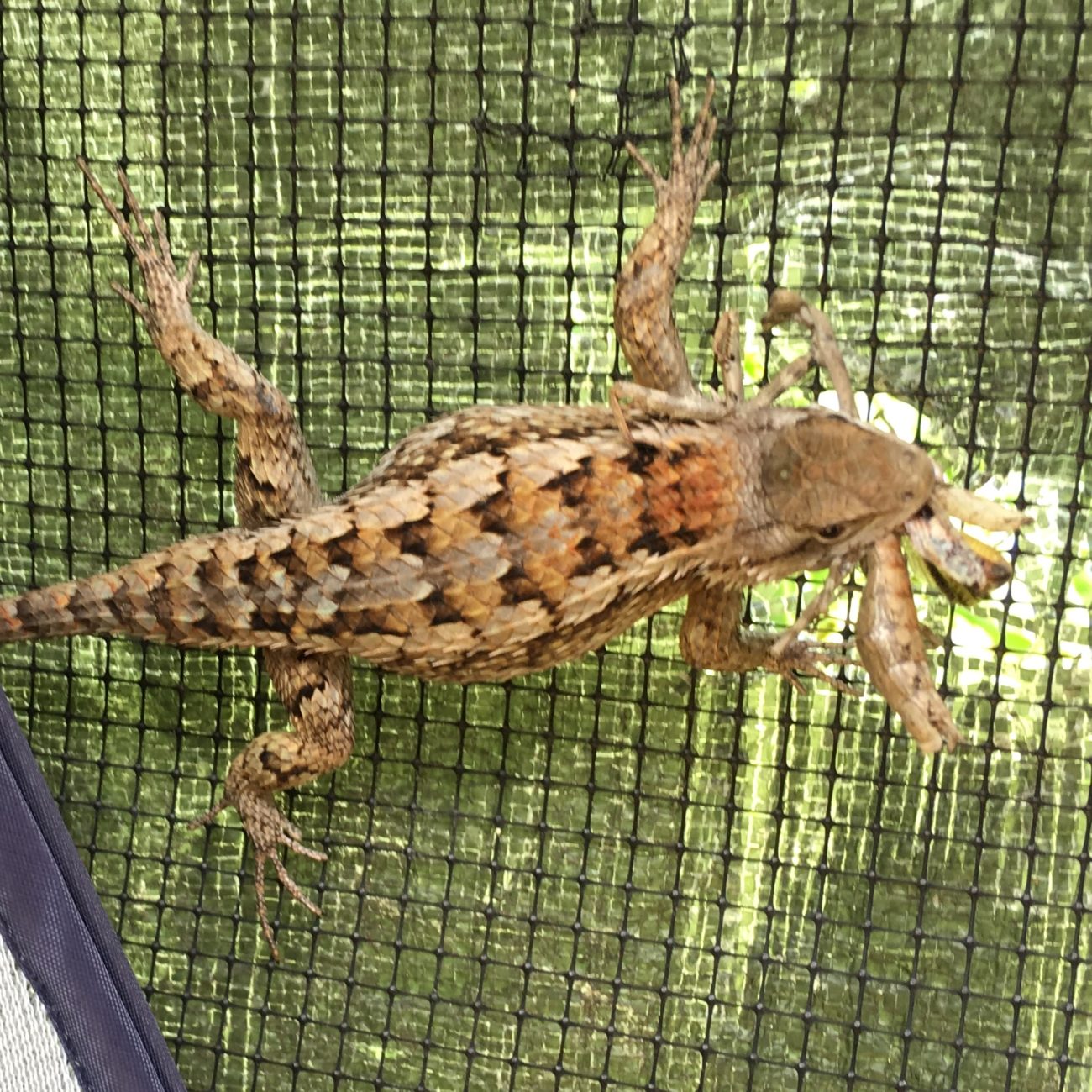
Texas spiny lizard with preying mantis after a long, 10-second struggle.
Years-ago Purchases at Barton Creek Nursery
Giant mistflower, Gregg’s mistflower, Abutilon, Mexican honeysuckle, Berlandier’s trumpets, Datura (Moonflower), Shrimp plant, Boneset, Rock rose, Western ironweed, Flame acanthus, Night-blooming jasmine, Star jasmine
Recent Purchases at the Native Plant Society of Texas Plant Sale
- Fall Plant Sale will be on Saturday, October 19, 2024, 9am – 2pm (or until all plants are sold out
At the Dowell Ranch Preserve, part of the Native Prairie Association of Texas - 301 Farm to Market 1626, Menchaca, TX 78652
- Keep an eye out for the Spring 2025 Plant Sale!
Frostweed, Salvia greggii (white), Rock pentstemon, Mealy blue sage, Alamo vine, Bee balm, Purple coneflower, Texas bluebonnet (Lupinus texensis), Gold acanthus, Narrow-leaf milkweed, Chrysactinia mexicana, Skeleton-leaf goldeneye, Coral honeysuckle, Golden dalea, Columbine, Snake herb, Spiderwort, Fall aster, Orange Zexmenia, Inland sea oats, Texas sage, Lantana, Esperanza, Yellow passionflower, Flame acanthus, Boneset (Fragrant mistflower), Chile pequin, Scarlet buckeye, Elbow bush, Redbud, American beautyberry, Coralberry
Native Plant Rescue Project
By salvaging and relocating a variety of native plants and seeds that would otherwise be replaced by an expanded road or an apartment complex, Ashley Landry is seeking to prevent further destruction of species in Williamson County.
The rate of development in Williamson County is among the highest in Texas. Landry not only witnessed the growth while hiking in the area, but also saw the lack of attention dedicated to the existing plants that experienced an unfortunate fate. Before flowers like green comet milkweed or prairie pinkroots found a new home, concrete replaced them, overtaking their habitat.
So, Landry initiated a project to rescue a variety of flora, some of which solely exist in Texas; others are endemic only to the Edwards Plateau region, which covers western Travis County and stretches across the Hill Country.
“[I saw] this disconnect as we have this huge biodiversity of wonderful plants that are disappearing,” Landry said about her inspiration for this project. “And so it just started with me, hoping to save the plants and give them new homes.”
“The encroaching development is just something we’re going to have to live with. But we can mitigate that by saving what plants we can and making pocket prairies and community gardens with native plants. As the climate worsens for us, using native species is going to become more and more important.” – Good Water Master Naturalists President Cindy Chrisler
To conduct these plant rescues, Landry first gets approval from developers to access the construction zones. Developers have no reason to be afraid that rescuers will encounter an endangered plant, which could halt their construction plans, Landry said. These plants lie on private property and do not classify as endangered species, so they bear no protection.
Landry and her team – composed of volunteers from both the Native Plant Society of Texas and Good Water Master Naturalists – collect plants of greatest conservation need, like plateau milkvine, or more unusual species like pineapple cacti. Once they sequester the plants and seeds from construction zones, the team relocates them to destinations including the San Antonio Botanical Garden, the Lady Bird Johnson Wildflower Center, and Native American Seed. “We just want for people to be able to get these plants in an ethical way, by hopefully getting them into the native plant trade,” Landry said.
Accounts We Enjoy
Instagram account Crime Pays But Botany Doesn’t
Texas Pollinating Bats
Mexican Long-nosed Bat (Leptonycteris nivalis)
Follow blooming agave north from south and central Mexico.
Spends June – August in Big Bend
Roosts with Townsend’s big-eared bat and fringed myotis in Big Bend
Long, fluffy hair compared to L.c. yerbabueanae
Recently documented in the Chiricahua Mtns around Portal, AZ
Feed on nectar and pollen from 21 plant species
Flowers of century plants are their main food in Texas
This species and century plants co-evolved and need each other for survival
When century plant flowers disappear in late summer, bats leave the region, for they have nothing left to eat.
Mexican long-tongued bat (Choeronycteris mexicana)
Counter-intuitively, has a longer, more pointy nose than Mexican long-nosed bat
Has a larger inter-femoral membrane than L. nivalis
Normally found in extreme south Texas, also a few records in west Texas
One was found hanging above the steps of the Dripping Springs Post Office in early 2000’s
Important pollinators of columnar cacti & 60 species of Agave
Pallid bat (Antrozous pallidus)
A gleaner bat that normally forages close to its day roost, eating arthropods.
Most eat scorpions, but no scorps have been found in stomachs of Texas pallids.
Recently have been discovered to pollinate prickly pear cactus
Since they sometimes eat the cactus “pears” or “tunas” they have become Texas’ only fruit bat!
The only other fruit bat in the US is the Jamaican fruit bat in the Florida Keys.
Lesser long-nosed bat (Leptonycteris yerbabueanae)
In US, found in AZ and New Mexico
Based on its distribution, this species could exist here, but not yet documented in Texas.
Known as the “tequila bat” because it is a major pollinator of the plant from which this beverage is made
De-listed but remains near-threatened